
















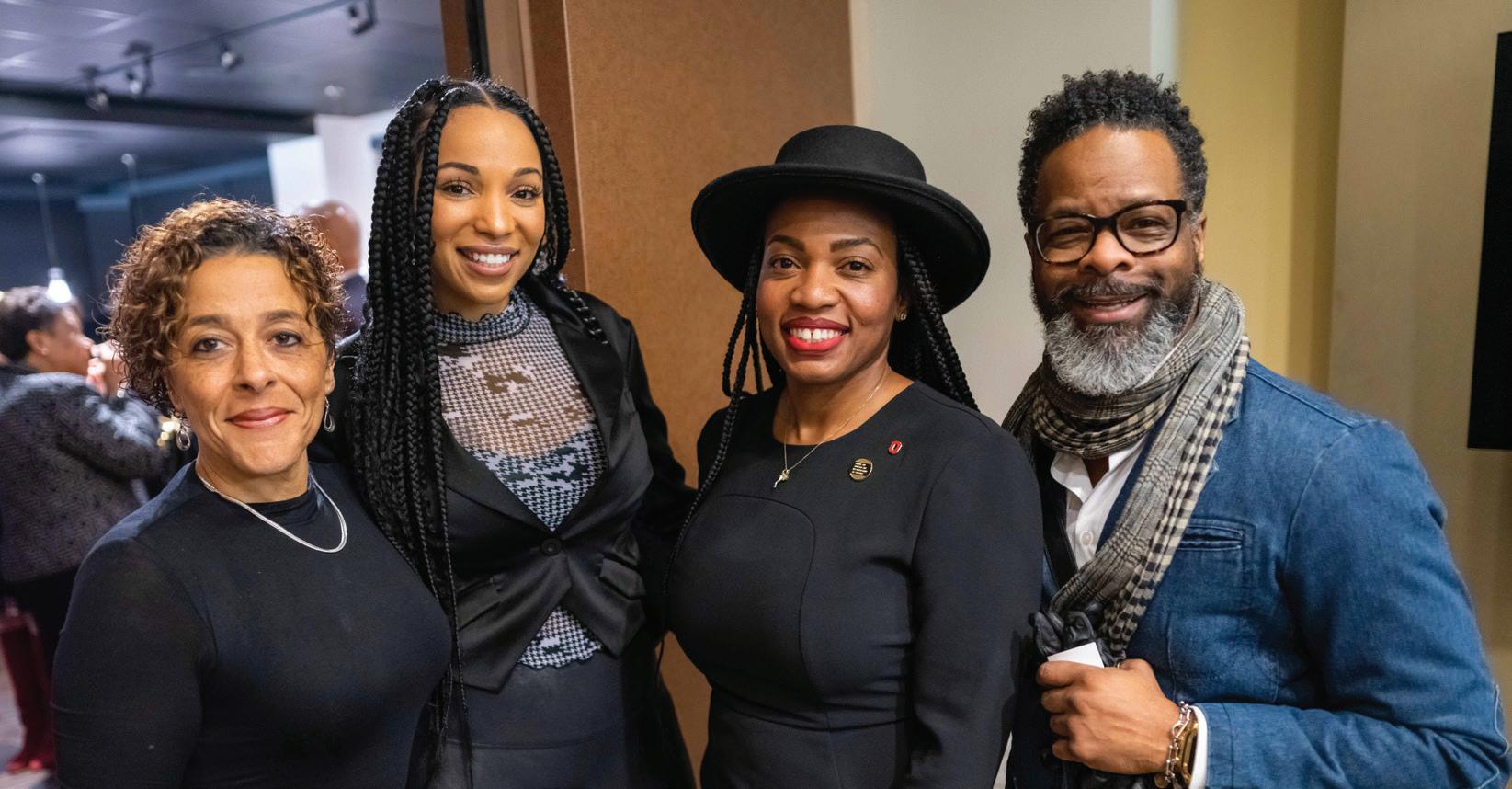

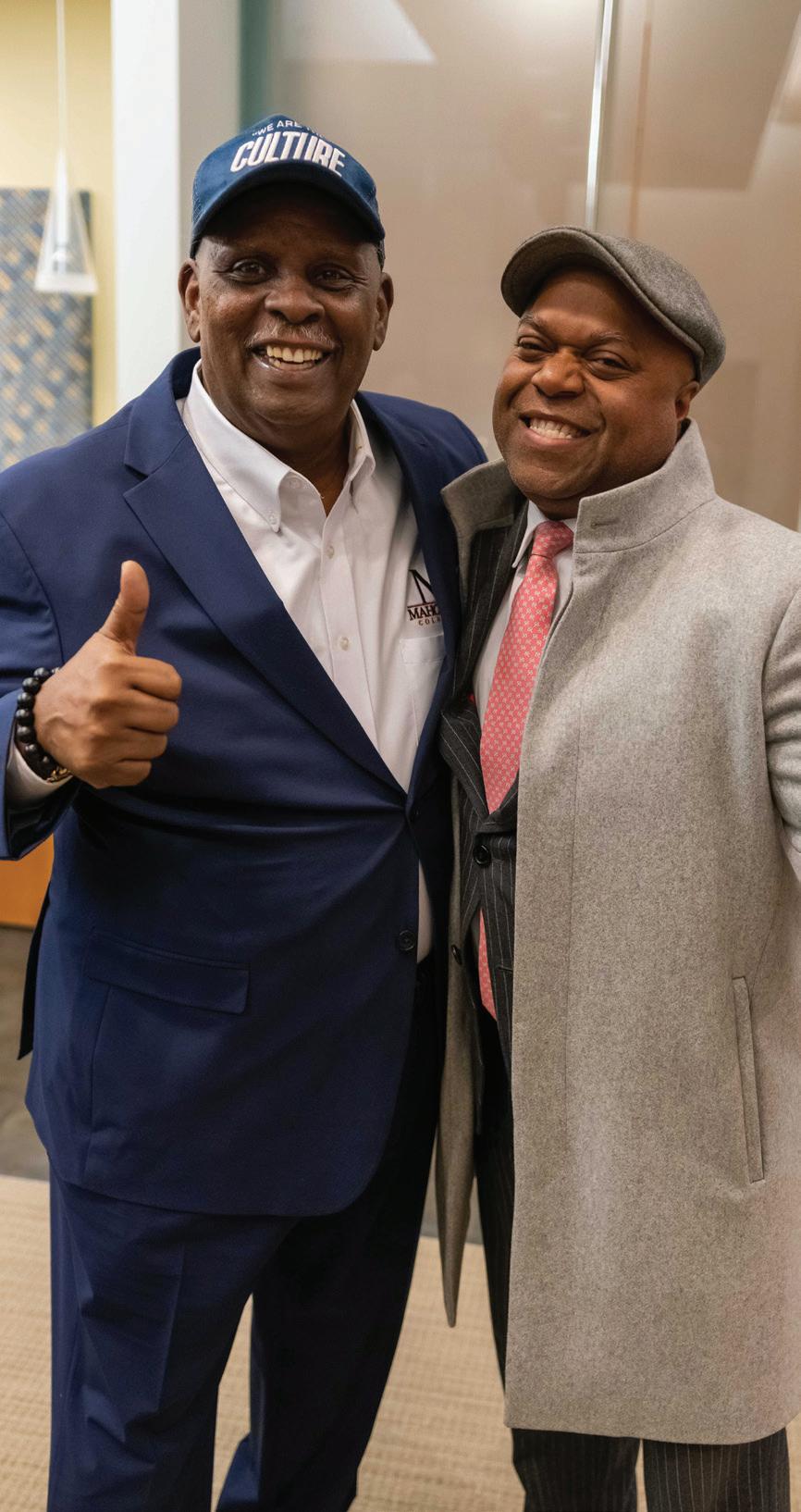

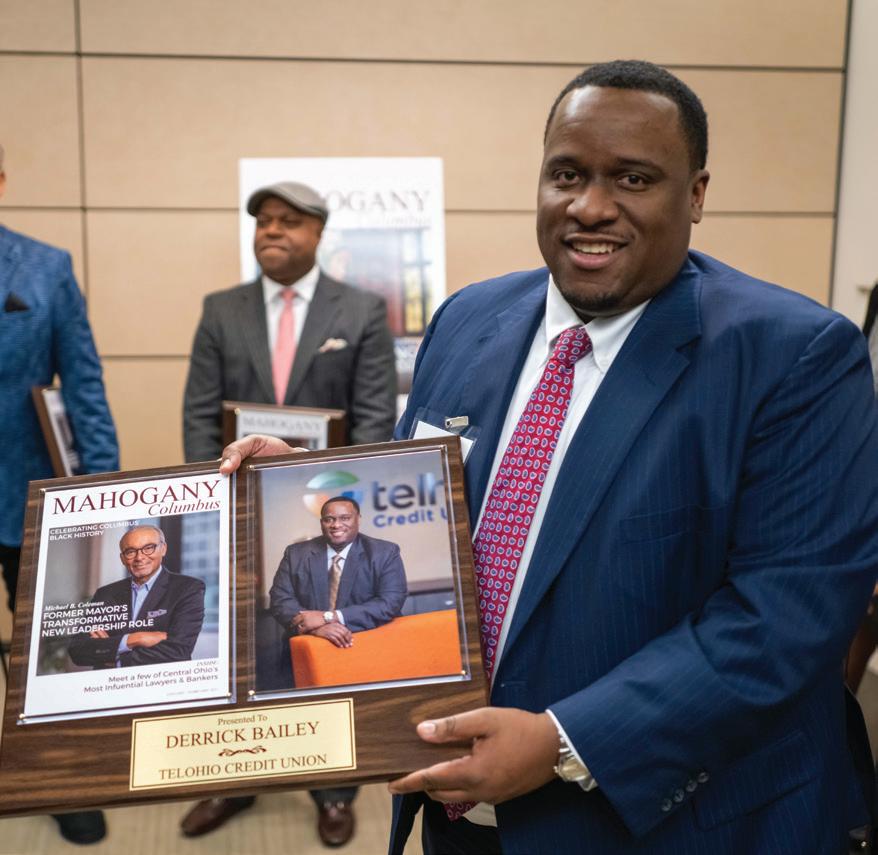


FOUNDER/PUBLISHER:
C. Sunny Martin
ASSOCIATE PUBLISHER AND EDITOR-IN-CHIEF, PARTNER
Kay Wilson
DIRECTOR OF CLIENT EXPERIENCE, PARTNER
Ajah Potts
DIRECTOR OF DEVELOPMENT:
Steve Clark
PHOTOGRAPHY:
Ira Graham III Official Photographer
GRAPHIC PRODUCTION:
Melissa Burkheimer Studios
PRINTING PRODUCTION:
Post Printing
EDITORIAL BOARD ADVISORS:
Roger D. Blackwell, PhD.
Alisha Martin
Sean Grant
Jennifer Walton, MBA

Kay Wilson
ADVERTISING INQUIRES: Sunny@CSunnyMartin.com
Phone: 614-937-3390 EVENT NEWS/PRESS

This is a time in which you must make a clear choice as to where you stand on issues of race & injustice in America. No more ignoring the explicit, institutional racism that exists. Beyond fighting for the right to BREATHE... while managing to overcome the middle passage, slavery, lynching’s, civil war, KKK, segregation, Jim Crow, the Civil Rights Movement, redlining, Proud Boys, insurrectionists, etc. and we’re still facing police brutality, police killings, underfunded schools, mass incarceration, food deserts in Black communities, gentrification, and so on and so forth. Now is the time! If you think you can’t singlehandedly end racism, then ‘what can you do’... understand fighting for equity and equality is not a simple checklist deliverable.
There are many arenas in which you can choose your fight. But that shouldn’t come off initial instinct and emotionality alone. We live in an era where information has never been more accessible, yet we refuse to leverage our resources. History has shown us the way. I will not discount the work my elders & ancestors have done to get us this far. There are also local organizations that do this work and have been doing it every day. You can use your dollar, your voice and your time! I am sure that you can bring at least one of these four ( 4) things to the table. The world is watching, we have
more of a voice now than any time I’ve ever lived in. We have been intentional about our demands, provide accountability protocols for our police, hold officials to clear Black agendas, and continue to fight for equity and equality for our children.
1. Make Our Dollars Make Sense: Spend money with black owned businesses, donate to get protestors out of jail, donate to a campaign that has a clear inclusive agenda, donate to black businesses impacted by Covid-19 or riots/looting, donate to non-profit organizations that serve the black community.

2. Use Your Voice: Use your platform to share information on petitions that can be signed to change legislation, call your local & nationally elected officials and state your demands (they work for us! We pay them).
3. Educate Yourself: Have conversations combating ignorance that suggests these problems don’t exist.
4. Vote in Every Election: Volunteer, engage in neighborhood cleanups, be a mentor, support a protest. Again read & continue to educate yourself, get on a board of a nonprofit organization working to build stronger communities, get involved with social justice organizations in your city. #Fortheculture
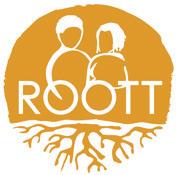


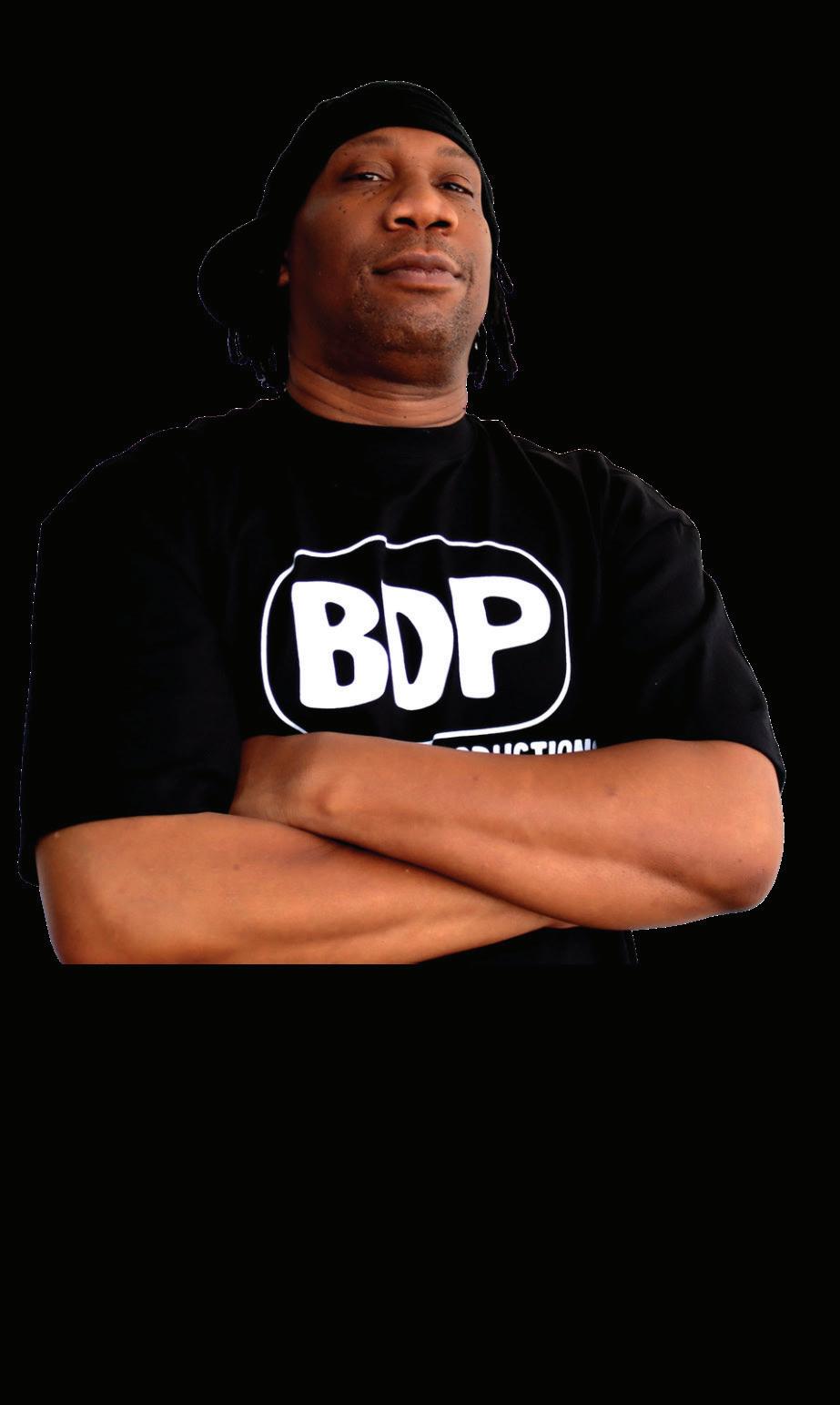


 Photo by Ira Graham III
Ira Graham Photography
Morgan Harper Speaks: Graduate of Stanford Law School
Antitrust & Consumer Advocate Lawyer
Photo by Ira Graham III
Ira Graham Photography
Morgan Harper Speaks: Graduate of Stanford Law School
Antitrust & Consumer Advocate Lawyer
Seeing Sheryl Lee Ralph sing “Lift Every Voice and Sing” before the NFL Super Bowl last February reminded me of the complexities our community faces in the 2020s. In many ways, we are on a bigger stage and have more opportunity than ever. But a question many of my millennial generation are asking as we enter our 40s is how, through politics and business, these new heights of exposure and success will ensure “victory is won” for us all.
I heard “Lift every voice and sing” at almost every Black community event I attended as a child in Columbus. It was deeply meaningful because it reminded me, even in my loneliest moments as a child navigating predominantly white educational spaces, that I was part of a legacy of people that endured and overcame, sacrificed and built. If they could do it, I could, too.
Berwick in the 1980s and 1990s showed evidence of how much that collective persistence had paid dividends. Black city leaders like Mayor Michael Coleman lived down the street. We cut through the late Judge Robert Duncan’s yard to get to the playground at Berwick (then, Elementary) School, and were told to move respectfully as the man who desegregated Columbus was resting inside. And everyday legends whose
names didn’t appear in the papers were in our midst living comfortable and stable lives— the late Mrs. Mary Ann Rollins, a public health nurse for the City of Columbus; and Mr. Guy Walker, an Air Force veteran who delivered the Dispatch in his retirement. I have had conversations with thousands of people in Central Ohio over the last several years while working in the community and running for office. A common sentiment is anxiety about the future. Many recognize that for every Sheryl Lee Ralph who is ascending in Hollywood (albeit, belatedly, but that’s a column for another day), hundreds of us are falling even further behind. The middle class is disappearing and, with it, the sense of community and connectedness that propelled so many of us to succeed.
And this sense of loss is not just in our imaginations. A recent national study found 80% of Black students lack proficiency in reading and math. We are at greater risk for heart disease, HIV/AIDs, asthma, cancer, and diabetes. And we are
likely very familiar with the study that projects Black wealth to be zero by 2053. On several metrics, we are less healthy, wealthy, and educated than a generation ago.
So, what’s to be done. I know Mahogany Columbus will focus on highlighting Black businesses and businesspeople. This is important. And I want to make sure we understand the political and policymaking processes that set the rules of the game for our businesses, the economy and our society. Understanding these rules is part of my job as the Director of Policy & Advocacy at the American Economic Liberties Project. In this column, I’ll bring some of that knowledge back, so, together, we can ensure that for every one of us that makes it to the international stage, even more everyday legends are building healthy, successful lives right here at home.

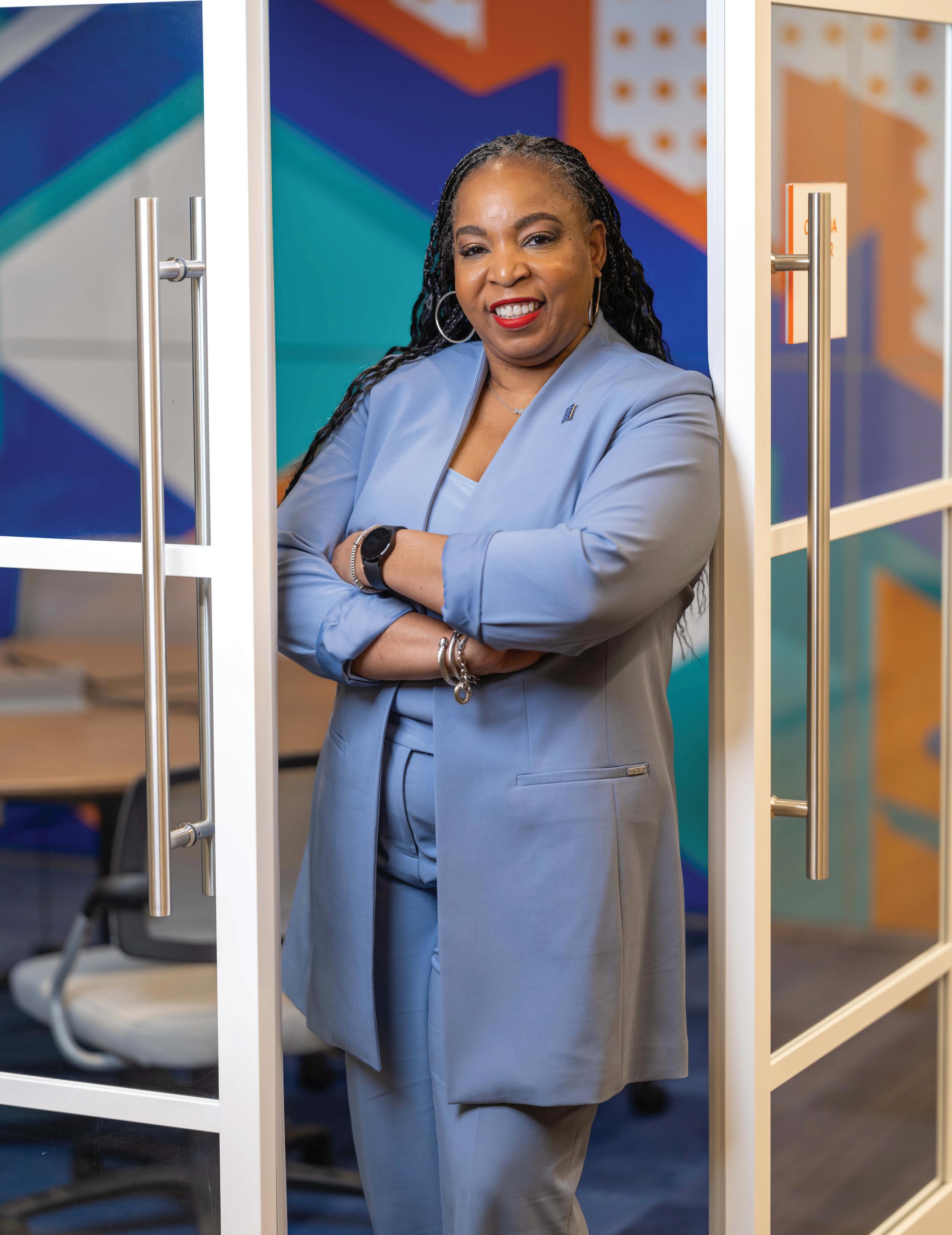 Photo by Ira Graham III
Ira Graham Photography
Toni M. Cunningham
Leader. Motivator. Strategist.
Toni M. Cunningham President &
Photo by Ira Graham III
Ira Graham Photography
Toni M. Cunningham
Leader. Motivator. Strategist.
Toni M. Cunningham President &
Ms. Toni Cunningham is the new President & CEO of the Godman Guild Association, the region’s longest-serving settlement house. In this role, she is living out her purpose: “helping people get too next’” in both their personal and professional lives.
Toni’s vision, executive leadership skills, and extensive experience make her the perfect fit for the Godman Guild Association. Previously, she served as the State Network Director – Ohio for Unite Us, a technology company that builds coordinated care networks of health and social service providers. A seasoned marketing and communications expert, Toni’s career includes roles with Per Scholas, Columbus Urban League, and American Electric Power. She also founded Image Anu, LLC., a boutique consulting firm specializing in personal branding and leadership development.
A lifelong resident of Columbus, Ohio, Toni’s community involvement runs deep. Most recently she has served on the Chief of Police Advisory Panel, the Mayor’s Recovery and Resiliency Committee, the New Directions Career Center Board of Directors, and the Ohio Workforce Coalition Leadership Committee. She is also a co-founder of Black Tech Columbus.
During Toni’s tenure, Per Scholas was named one of The Columbus Foundation’s Top 5 Nonprofits to Watch in 2018. That year, she was also one of Smart Business Magazine’s Smart50, an honor which “recognizes the top executives of the 50 smartest companies in the Central Ohio region for their ability to effectively build and lead successful organizations.” She was honored by Women for Economic Leadership and Development in 2020, and in 2019 she was named BizTech Columbus Business First’s Executive of the Year. Toni is a highly sought-after conference speaker, presenter, and workshop facilitator for organizations like Dress for Success, Council of Women in Banking, National Urban League, and Women in Tech. Toni is committed to excellence and continuous learning. She earned her Master of Science in Marketing and Communication from Franklin University and her Bachelor of Science from Ohio Dominican University. She’s also an alumna of the African American Leadership Academy, as well as a 2019 American Express Leadership Academy Fellow.
125 Years of Service
Godman Guild Association was
founded in 1898 by Ms. Anna B. Keagle, a Sunday school teacher with an undying passion for bettering her community. When she learned that all her students had been arrested and jailed, Ms. Keagle took action. She refused to be part of a community where children were incarcerated. Instead, she worked to develop a holistic approach to community development. As a result, Godman Guild Association was created to promote strong families and a strong community.
This year, Godman Guild Association celebrates 125 years of service to Central Ohio. Although its programs have evolved as our city has grown and changed, today’s Godman Guild Association shares one crucial trait with its earliest iteration: a commitment to enriching Columbus communities and challenging them to be their best. Today, the Godman Guild Association focuses on Youth and Family Education and Workforce Development—two areas that align with Ms. Keagle’s original mission. Godman Guild Association has one goal for the next era: impact. The organization’s mission is to provide programs that enhance the social and economic mobility of individuals and families in Central Ohio.
Empower Work. Ignite Futures.
Now, Toni is harnessing the Godman Guild Association’s education and employment expertise to serve our community. Columbus’ need for workforce development programming has significantly increased in recent years and shows no signs of slowing. Under Toni’s leadership, the Godman Guild Association will establish a new state-of-the-art Workforce Development Hub in the Downtown Discovery District. Located at 195 N. Grant Avenue, the Hub will expand the Godman Guild Association’s capacity to provide academic services, job training, and career support. The Godman Guild Association will create pathways
to career success and increased earning potential through a continuum of services from kindergarten to career.
The Workforce Development Hub will be home to the new Work Readiness Academy (WRA), where job seekers will gain tools, training, and certifications to prepare them for their career journey. Whether participants want to go straight into the workforce, gain more technical skills, or apply for post-secondary education, they will be equipped. They will also have continuous access to mentors and counselors to support them throughout their career path—even after they graduate. The Godman Guild Association’s signature Career Bridges program will bridge graduates with community and

employer partners that specialize in high-impact technical skills training that will support their career aspirations.
The Workforce Development Hub will also be a base for collaboration. The Guild will offer the Hub as a place to gather, ideate, and build strategies to solve some of our city’s most pressing challenges. At the Workforce Development Hub, the Godman Guild Association will set the stage for success. Here, individuals will ignite their futures, and community workforce initiatives will thrive.
 Photo by Ira Graham III
Ira Graham Photography
Michael T. Bivens
Candidate for Mayor City of Whitehall
Photo by Ira Graham III
Ira Graham Photography
Michael T. Bivens
Candidate for Mayor City of Whitehall
Michael T. Bivens is no stranger to being a trailblazer. A multitude of firsts has defined his life. He is the first from his family to graduate from college, obtain a law degree and be licensed to practice law in the State of Ohio and the United States District Court for the Southern District of Ohio. Michael did not stop there. He also was first in his family to open, manage, and operate a law firm and in 2015 he made history when he became the first African American elected in the City of Whitehall as its City Attorney. This historic run does not stop there either. In November 2023, Bivens is poised to become the first African American elected as the Mayor of the City of Whitehall.
Michael is a rising star in the Franklin County Democratic Party and an established public servant in Whitehall, Ohio. Michael is a Columbus native, a graduate of Columbus City Schools, Capital University, Capital University Law School, and a Marine veteran who served during Operation Desert Storm. He has been married to his best friend Joy for nearly twenty-five years. They have two children, Mikayla Bivens, a graduate of Hampton University, and Michael Justin, a Senior at North Carolina A&T University. Michael is a member of Alpha Phi Alpha Fraternity, Incorporated.
My passion for public service and
the value it brings to the community is my reason for running for Mayor. I know that I will be an effective gatekeeper for public safety, sustainable housing, and economic development. My heart is to protect the citizens of Whitehall with a mind toward the big picture, and issues that bind us all. I think of the beauty of Whitehall in terms of making a true investment in its human, social and economic assets.
I want to be the mayor because I have the cultural competency, discipline, and understanding of local government in such a way as to bring transparency, accountability, and fairness to our community. Mercy is not the absence of accountability. However, justice must always be tempered with mercy. I have the executive, legal skills, temperament, and leadership abilities to manage the City of Whitehall in a way that builds new bridges instead of maintaining of status quo.
Taking the poverty rate of Whitehall alone leads me to believe that the overall governmental system is not working for all people, and if elected to Office it will be my stern desire that equity, fairness, and the fundamental dream that connects us as Americans hold true: that we all are entitled to life, liberty, and the pursuit of happiness. How is this done? The focus will shift to addressing systemic issues in this community. For instance, instead of counting
education in years, the focus will shift to matching that education with the needs of the employers. Whitehall will also become an innovation hub, with healthy mixtures of high and sustainable housing within feasible proximities to workplaces. Essentially, I will strive to eliminate financial black holes, overburdened and cascading programs, and political stalemates.
I will continue to work with the City Attorney’s Office to make sure that Victims of Crime will receive tools to become empowered. Not to mention, as chief executive for the city, I will make sure the worst crimes are fully prosecuted and by all means, each person will get the presumption of innocence. I will champion the causes of Whitehall for every citizen and be a tireless advocate for the most vulnerable of our society. The poor, disadvantaged, disenfranchised, and marginalized will not be taken advantage of by a heavy-handed government that turns a blind eye to the data that demands a need for innovative solutions. Furthermore, in terms of youth crime and public safety: children will be treated like children with a mind toward their future, rather than a mistake that they made in a moment of immaturity.
I want to be the Mayor of Whitehall because I know that I will bring a spirit of humility, compassion, fairness, awareness, and concern that uplifts our community while at the same time-solving problems. My leadership will assure that Whitehall becomes a growth engine for everyone to go Forward Together.
Why do you want to be a part of
the Government of the City of Whitehall?
Whitehall, Ohio is one of the best Cities to live in Central Ohio. It welcomed my family and afforded us opportunities. Franklin County is one of the largest counties in the State of Ohio. It currently has over One Million people, and it’s poised to grow even more in the next decade. The Government of Franklin County has initiated a study on poverty, and it has made the big bold claim that we must eradicate institutionalized racism in our County. The plan is deficient in how local cities and suburbs play a role in eradication. I want to be part of the government of Whitehall to partner with the regional efforts and create systems within the City of Whitehall that target workforce development, family development, sustainable housing, and justice for all. It is unjust that the average African American family’s salary lags behind the Average White family’s salary by nearly $40,000.00. The disparity is even higher in the City of Whitehall. I believe local government can play a role in bridging this gap. This includes partnering with our School District to find solutions to these issues. Without ignoring other systematic aspects that create voids, like over-policing, racial profiling, and implicit bias; the Mayor’s Office in my administration will take a direct look at the core issues and the data locally, and in the County with a mind toward reformation, and reconciliation.
What are my qualifications for this office?
Taking into consideration that qualifications are defined by accomplishments that make me suitable for the job, all I can do is speak to my past practice. If past
practice is a predictor of future performance; then my qualifications are as follows: I was raised by a single mother that taught me despite the deficiency of resources having an abundance of love and passion for serving others fosters and nurtures change. My unique track is what sets me apart. As the Whitehall City Attorney, I have become a Progressive Leader creating restorative justice opportunities in Mayor’s Court while connecting to the Community in which I serve. I am also an effective communicator with the ability to build bridges between opposing viewpoints and ideologies. The overarching quality that keeps solidarity with all of my accomplishments is that I am a fighter and focused on community service. When I was 19 years old, I took the oath to defend the Constitution of the United States when I joined the United States Marine Corps, and then again while standing on the Stage of the Ohio Theater in 2003 to become a licensed Attorney and Counselor at Law. It has been my mission to use my faith, collective wisdom, and passion to make a difference in the lives of others. I have led men in the military, have executive experience in business, church, and governmental office; and I’m poised to lead the City of Whitehall, Ohio as its Mayor.
We all lose when one loses. Therefore, we all should be seeking the same solution: FORWARD TOGETHER. City government and its citizens should be seeking the same solutions and vehemently support and defend the Constitution of the United States and the State of Ohio. Furthermore, each of us must guard against gamesmanship in the lives of the people we serve, abandon personal pride,
and seek parity. We should reject personal vendettas, apathy, and intemperate behavior and we should self-regulate with a mind toward the highest ideals of our oaths of office. At no time should we take an “us versus them” mentality. Instead, we must adhere to the notion that it is “all of us” together while clinging to the highest core value of loving our neighbor as ourselves, and if that principle cannot be embraced then at least do unto others as you would have them do unto you.
What Whitehall lacks in size we make up in heart, and that heart seeks to have Whitehall as the best city in Central Ohio to raise a family, inspire growth and build and strengthen the regional community. I will build on the hard work of my predecessor Mayor Kim Maggard and all that she has accomplished, as well as continue to focus on the quality-of-life issues that are important to our residents.
By fostering an environment where Whitehall businesses succeed, continuing to invest in public safety and Infrastructure, being a regional partner in addressing poverty, systemic racism, and the housing crisis by providing sustainable and affordable housing, building a strong bridge between city government and our schools to ensure that our children and their families increase educational and vocational opportunities, while at the guaranteeing a government that is transparent, accountable, efficient, and responsive. Not only is Whitehall the City of Opportunity, under the administration of Mayor Michael T. Bivens, but it will also make sure that every citizen moves Forward Together.

Zora’s House is the only co-working space and leadership incubator in the state of Ohio – and one of very few in the country – that centers the unique needs, identities, and experiences of women of color. We sat down with LC Johnson, the nonprofit’s founder, to discuss a robust new program she is creating that is hyper-focused on middle-income women of color who are first-generation wealth builders. JPMorgan Chase is supporting the pilot and testing of this uniquely trauma-informed and culturally competent financial literacy program.
Q: Walk us through how financial education can be “culturally competent and trauma informed” – What are some examples of that?
LC: I’ll use myself as one example of this. While at Duke University, there was this level of savvy around finances, around internships, around all the things that help us think about how we move through our financial world as adults. When I was introduced to that, I realized that my personal background had a big impact on my financial knowledge and decision making.
But I think about immigrant women of color whose families left everything behind. That’s traumatizing.
I think about folks who come from cultures that are accustomed to intergenerational living. To me, it’s a no-brainer to think about how we are being trauma-in-
formed and culturally aware when talking about finances.
Q: How did the idea for Zora’s House come to be?
LC: When I moved to Columbus, Ohio from North Carolina in 2015, I was really craving being in community with other women, especially women of color who understood certain parts of my identity and my journey in ways that I didn’t really want to have to explain repeatedly. I wanted to find a space where women of color could come together and get connected to people, resources, opportunities, and skills that they need to transform themselves and the world around them. I really struggled to find that here. It clearly didn’t exist, and it clearly needed to – and so the idea for Zora’s House was born.
Q: Why do you focus specifically on middle-income women of color?
LC: There’s this whole middle ground of what I call first generation wealth builders – folks who are in a different tax bracket than their parents, but also not quite what you would call wealthy. For many first-generation wealth builders, they may be the first person in their family to ever own a home, or to make six figures, or to have a retirement deal outside of a factory job. Many
of these folks are having children and moving up in their careers, and they don’t have the support they need to think about how to start to build generational wealth. So, for us, we are focusing on that middle-income woman – you’re stable, you have a job, you have some of these basic things, your credit is pretty good…now how do we start talking about wealth?
Q: Tell us about the new financial literacy program that Zora’s House is launching.
LC: I’m really excited to work with JPMorgan Chase to pilot a new program designed specifically for women of color. The program begins with a 3-day retreat, followed by a 12-month facilitated cohort experience, all focused on culturally competent and trauma-informed financial literacy education. The overall goal is to increase confidence and knowledge, as well as build a network of like-minded peers to create direct pathways to greater prosperity.
To learn more about the program, go to https://zorashouse.com/programs/woc-wealth-builders/

“The road to victory in the race to win leads through reading books, whether the bookshelves are at home, in school, or the local library.”
Roger D. Blackwell, Ph.D.
Harry Belafonte is one of the world’s enduring treasures, a legendary entertainer for more than half a century. Most people, at least above a certain age, know or remember his plaintiff Jamaican folk songs about a man who had to leave a little girl in Kingston town. They may even remember his unforgettable Carnegie Hall concert, and the album that captured that renowned experience. If you have followed the history of race relations in America, you may also know that his career is just as illustrious as a civil rights champion, as one of the closest friends and advisors of Dr. Martin Luther King. If you want to know why some people win and others lose, study the life and extraordinary success for nearly a century of Mr. Belafonte.
Some of the most useful insights into why people win or lose, especially in the critically important issues of racial equality, justice and prosperity are revealed in a documentary about Mr. Belafonte’s life. I was privileged to interview him personally and sit in the front row of the film’s premiere, at which Mr. Belafonte commented and answered questions. I took careful notes, observing not only Belafonte, but how members of the diverse audience
were enthralled by the personage and career of a man who made a difference –a big difference--in overcoming racial discrimination and injustice.
At the world premiere of the documentary, Mr. Belafonte was interviewed by Dr. Michelle Alexander, Moritz Law School professor at The Ohio State University and author of The New Jim Crow: Mass Incarceration in the Age of Colorblindness. In that book, she cogently describes racial injustice and a truth about the American culture that most citizens shun. In her interview with Belafonte, she unsealed the mind of this great American and hero, making transparent reasons why some people win, and others lose in the quest for prosperity.
den. The leaders taught followers what must be done to rise out of obscurity and poverty. The leaders were neighbors, thrust into the role of mentors. Today, the pattern is changed. Those who make it out of the hood frequently flee to the suburbs and golden ghettos, leaving behind the rest to make it on their own. Count Basie and other musical giants were Belafonte’s next-door neighbors. It was an era in which people who made it to the top stuck around to pull others to the top with them. It was a different era than what came later with the “lobster barrel” approach in which ones from underneath pull down any who try to climb out the top of the barrel.
The film featured early experiences of Mr. Belafonte growing up in Harlem, nurtured by his single mother and a neighborhood of sharing individuals, including some of the jazz greats who lived in the area when segregation forced both winners and losers to live together instead of moving out of the hood to upscale suburbs. As unjust as were the evils of segregation, it did force community leaders and economic winners to live next door to the downtrod-
The documentary described musical triumphs of Belafonte on recordings, stage, and television. Most of Belafonte’s musical success I knew from my days as a disc jockey at radio stations in Missouri. I took one of his Fifties albums to the reception prior to the screening and lecture, and Mr. Belafonte graciously signed the album, “to my favorite disc jockey.” Excellent marketing, I thought, even though he did not need my help promoting his record royalties, and I no longer had any ability to do so.
The film piqued human con-
sciousness describing Mr. Belafonte’s struggles against racial injustice and the promotion of human rights. Over the years, I read newspaper accounts of the relationship between Belafonte and Dr. Martin Luther King, but I did not know how close their friendship was and how frequently Dr. King turned to Belafonte for advice. Nor did I understand the role Belafonte played in securing celebrities such as Marlon Brandon, Charlton Heston, Tony Bennett, Sammy Davis, Jr., and others focusing attention on the struggle for civil rights and racial justice in America.
Of the many distinguished lectures by world leaders ranging from Eleanor Roosevelt to Lady Margaret Thatcher I have attended and interviewed, few impressed me as profound and articulate as the one experienced in the interview following the film, conducted with Mr. Belafonte by author Michelle Alexander. As I surveyed the audience, I recognized that, in addition to university students, most of the audience was composed of professors, lawyers and prominent community leaders. After the interview, audience members queued up at mikes to ask their own questions, and many joined the queue. So many, in fact, that I did not have a chance to ask a question burning the synapses of my mind.
lation as Mr. Belafonte. “Was he educated at a U.S. university and then attended Oxford on a Fulbright scholarship?” I wondered. Did he take speech courses with a communications major at some prestigious university?” Or perhaps he trained at the Julliard School of Music.” Such experiences might explain the excellence of his disciplined diction and command of vocabulary yielding ability to express insights cogently yet succinctly. His vocabulary, conceptual frameworks and diction revealed to the audience that night, it was listening to a true intellectual. Harry Belafonte was speaking more articulately and with more intellectual insight than could most of the Ph.D. s and J.D.s who comprised a major portion of the audience.
What was the educational background providing Mr. Belafonte such profundity and communication skill? Then, during the interview, he revealed his educational background. Mr. Belafonte is a high school drop-out.
ways of poverty toward progress in prosperity.
I did not get to ask Mr. Belafonte how he overcome poverty, paucity of education and racial injustice, but I have asked others who rose from similar backgrounds battling the racial discrimination that is still rampant, even after a half-century of change in the legality of discrimination.
The secret about how to rise from losing, to winning, is running the race to win. From someone, somewhere, or some faith, winners decide they will run to win. They must be imbued with the optimism of a Harry Belafonte or, an “up from the hood” attitude that refuses to lose. It is the same attitude found in the book The Other Wes Moore in which recently elected Governor of Maryland Wes Moore describes how he devoted his life’s work to a basic principle: no matter where you start in life, you deserve an equal opportunity to succeed – a job you can raise a family on, a future you can look forward to, a path to prosperity.
Rarely have I heard anyone, let along an entertainer, speak with such eloquence, comprehension of diverse viewpoints and articu-
The question I wanted to know was simple. How does a high school drop-out achieve more intellectual ability and communication skill than an auditorium full of Ph.D.’s, M.D.s, MBAs, and J.D.s? If I could comprehend the answer and successfully transmit it into schools in disadvantaged neighborhoods, I would have the secret of transforming not only the individuals who grasp that secret, but potentially turning vast segments of the population from path-
Winners know the race to prosperity is not a sprint; it is a marathon. They have the Rocky Balboa belief that champions are not measured by how many times they are knocked on the canvas, but how many times they get back up and into the fight.
Although role models are often athletes, musicians and TV celebrities, those pathways are too narrow for many to funnel upward.
Running to win must find a wider path, one with less of a cliff from which to fall.
The road to victory in the race to win leads through reading books, whether the bookshelves are at home, in school, or the local library. You must read to be articulate, even if the book is digital. As a child growing up in urban schools, you may be assigned to a “reading circle” and your circle will be influenced heavily by how you speak. Speak “urbanese” and you will be assigned to the loser’s circle. Speak with articulate diction and you will be assigned to the winner’s circle. There is one sure way to get out of the loser’s circle---read often and read widely. Mothers, teach your children well---how to read.
Leaders such as Vernon Jordan are known as a reader, and if you are a reader, you become articulate. Jordan says you cannot stop reading; you must read to be able to speak so others will listen. People listen to articulate people, but not to people who speak in the diction and vocabulary of the hood, no matter how colorful, culturally rich, or attention-grabbing language from the hood may be. President Obama was known as a voracious reader. So is Jamie Dimond, CEO of JPMorgan Chase, who I have been told by his colleagues sometimes reads a book a week. So was Sam Walton, the man from Missouri who created the richest family in the world, starting Walmart at age 45, partly by asking the question of
his employees, “What books have you read that would make our firm better managed than competitors?”
African American, Caucasian, Asian, Latino, Native American or any other category, if you want to win the race, you must read a lot. Often, the race to the top starts about age three, often by parents reading to their children. The mother of world-famous neurosurgeon Dr. Ben Carson was barely able to read herself, but she understood the importance of reading books enough that she took her sons to a public library and helped them select books to bring home and read to her.
What is the single secret most likely to overcome racial injustice? Laws, jobs, or athletic prowess have their place, of course, but the W.E.B. DuBois, Frederick Douglass or Langston Hughes of tomorrow are more likely to arise from ravenous readers of today. When I taught a course called Black Survival in White Racist Organizations in Black Studies courses at The Ohio State University, I invited successful African American executives from major corporations to be guest lecturers in my class. One was a Vice President of a major department store chain, and he told the mostly Black students in my class how he stood in front of a mirror, reading the New York Times into a tape recorder. Some of the students accused him of selling out to white culture. His answer was simply, “No, I want to be successful in any culture----and
to do that you have to sound like you are educated whether you are or not.” Whether he had an MBA from a prestige university (which he did) or whether he grew up in the hood like Harry Belafonte (which he also did), people listen to those who are articulate – and either background requires a lot of reading.
Black engineers make good economists. That is a truism I learned from my friend the late Dr. Oliver McGee, whose Ph.D. in engineering from Arizona State allowed him to head an engineering department at The Ohio State University and later become a professor at Howard University. He knew numbers well because of the mathematics he mastered as an engineer. He understood economics because he knew numbers. And people listened to the books he wrote and his many appearances on TV and radio because he spoke with the diction and knowledge derived from his lifetime collection of thousands of books. The collective wisdom of all those books was transfused from the brains of authors into Ollie’s brain, giving him authority that flowed from his articulate lips.
Racial discrimination has ended legally, but not in the reality of everyday American life (or many other nations). Racial discrimination ends only when ability is recognized regardless of race. Spreading that news among schools in Black and other struggling schools is essential to helping people win the race, of turning
a lifetime of losing into a lifetime of winning. It is the surest – and probably the only—path to prosperity and equality of opportunity.
There are three things’ people say should be avoided at dinner conversations. Race, politics, and religion, topics that in the short run usually do not make good dinner parties, or good marriages. I’ve taught classes at all levels from GED to Ph.D.in which the students were all or mostly African American, and I know a white person cannot walk into a classroom, a dinner party or a marriage and expect immediate acceptance. I have learned through experience, however, sincerely wanting to understand each other can lead to a mutual basis of trust, confidence, respect, and acceptance. Immediate gratification does not work, delayed gratification in developing mutually beneficial relationships does work. It is a marshmallow world studies at Stanford University proved, even in racial relationships.
Winning the race is about running to win, and that is worth doing to achieve a more equitable and prosperous world. Winning the war for equality of opportunity is worth the fight. People are fickle. They like winners; they do not like losers, but to win that war the warriors must not be fickle themselves. They must read (often starting early and continuing a lifetime), understand what the rules of the game are to win, and have the endurance that provides optimism and character to win
the war even when faced with bloody battles. Woody Hayes, coach and mentor to the only two-time Heisman Trophy winner, Archie Griffin, said it well when he said, “Winning is wonderful. Losing sucks.” In the lifetime game of prosperity, reading is as important to understanding how to be successful as blocking and tackling is to football.
After a lifetime of studying the causes of prosperity and teaching courses encompassing students of many types ranging from prison inmates to 65,000 students in mega classes at Ohio State and other schools including Northwestern and Stanford as well as schools in Africa ranging from Soweto and universities in Johannesburg and Cape Town, people suggested I should write a book on the topic of achieving prosperity. So, I did, with the help of Dr. Roger Bailey a professor and Director of the full-time MBA program at Ohio State. At a time when a nation is honoring and focusing on Black Culture and History, it is a book you might find useful in creating prosperity for you personally, as well as organizations you are in, and the nation. The book, Objective Prosperity: How Behavioral Economics Can Improve Outcomes for You, Your Business, and Your Nation by Roger Blackwell and Roger Bailey published by Rothstein Publishers, is available from Amazon and other booksellers and hopefully in your home or public library.
Roger Blackwell, Ph.D., retired after teaching forty years at The Ohio State University and other schools. In addition to co-authoring the book Objective Prosperity with Dr. Roger Bailey, Blackwell is the author or co-author of forty other books, including Consumer Behavior, translated into multiple languages, used throughout the world. He is author of From the Edge of the World, Saving America, Customers Rule, Brands that Rock, From Mind to Market, You Are Not Alone, and other textbooks and research reports.

MEET A FEW OF OUR TEAM MEMBERS
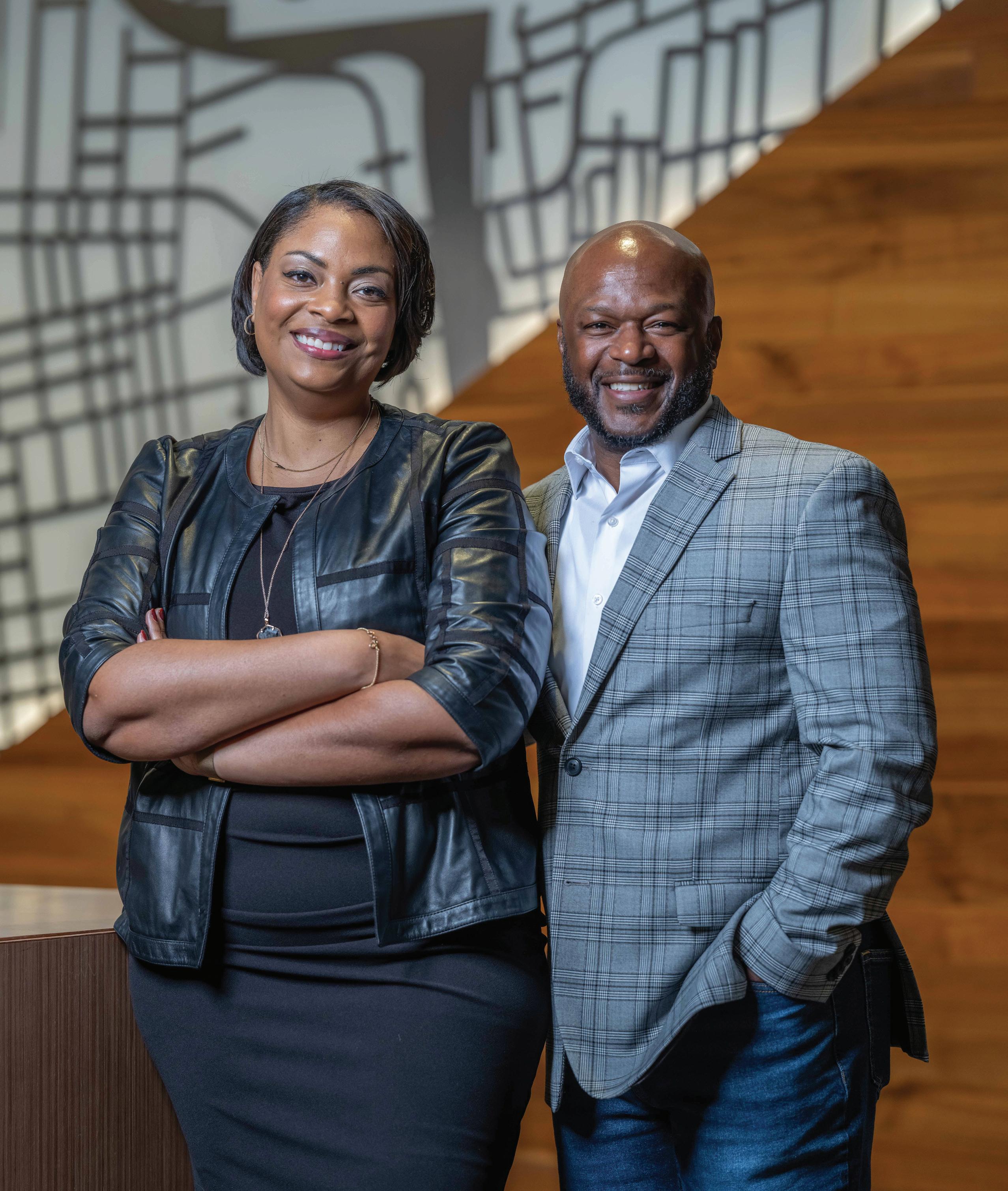
Alea Bradley joined JPMorgan Chase in 2002 as a Recruiting Coordinator supporting both the Technology and Corporate Functions. In 2007, she was a campus recruiter leading the recruiting efforts for both the Technology and Operations Analyst Programs primarily focused in Illinois and Florida.
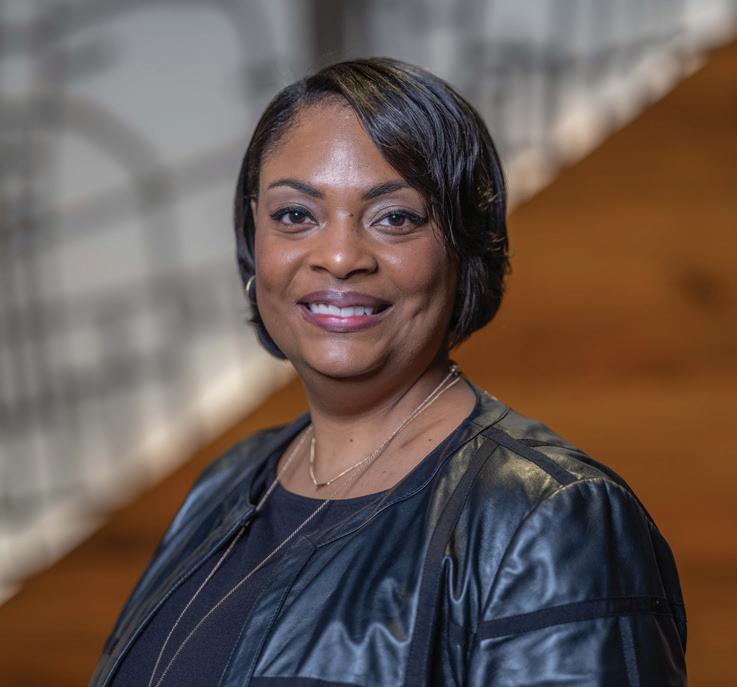
Alea transitioned to Asset & Wealth Management (AWM) where she was promoted to Associate Recruiter in February 2010. In this role, she partnered with hiring managers and senior leaders to develop recruiting strategies, execute diversity initiatives, and manage the candidate experience. In 2014, Alea was pro-
moted to Vice President, AWM Operations Recruiting – North America NAMR Team Lead where she was a manager responsible for recruiting efforts of current and former military members within the Asset & Wealth Management division. In 2016, Alea’s remit expanded as she was named the Global Head of AWM Operations Recruiting. Post numerous successes, she was promoted to Executive Director in 2020. In June 2020, Alea transitioned to Corporate Talent Acquisition, where she built and leads a firmwide diversity sourcing team. The team focuses on expanding recruiting pipelines and engaging diverse talent with a shifted focus on diversity, equity and inclusion events and engagements.
In this role, Christopher leads a team dedicated to helping build pathways and programs for employees to grow, while helping to connect them to volunteerism opportunities and community engagement.
Since joining the firm in August 2017, his primary goal has been to drive business outcomes and behaviors by creating an ecosystem that centers around a diverse and inclusive workplace. Christopher is a sought-after speaker, Master Facilitator, certified Hogan and FIRO-B leadership coach, mentor, and sponsor for multiple business resource groups. Additionally, Christopher is
a leader in the Ohio market’s Human Resources Leadership Team and Ohio DEI Council. Through his leadership, multiple Champion and Leadership Forums have been launched to help facilitate engagement and exposure for underrepresented communities.

Throughout his nearly two-decade career, Christopher has focused on helping people create pathways for career development, advancement, and mobility. From his very first job to his current role with JPMorgan Chase, he has focused on ensuring inclusion reaches all corners of an organization. He began his career at
In her spare time, Alea is a huge supporter of philanthropic work, emphasizing helping youth and underrepresented individuals in her community. Alea has served on multiple boards including, Dress for Success, I.C. Stars Columbus, as well the steering committee for United Way Key Club. Alea’s most recent honor is to serve on the board of A Kid Again.
Alea grew up in Toledo, Ohio where she attended the University of Toledo.
Wittenberg University where he was responsible for the recruitment and retention of students. He has since been personally and professionally committed to bringing inclusion to the front and center of everything he does. He has held several leadership roles within his community and has worked tirelessly on helping people develop their ‘whole person’ mentality. Christopher has been married to Melanie for 24 years and they have three adult children.
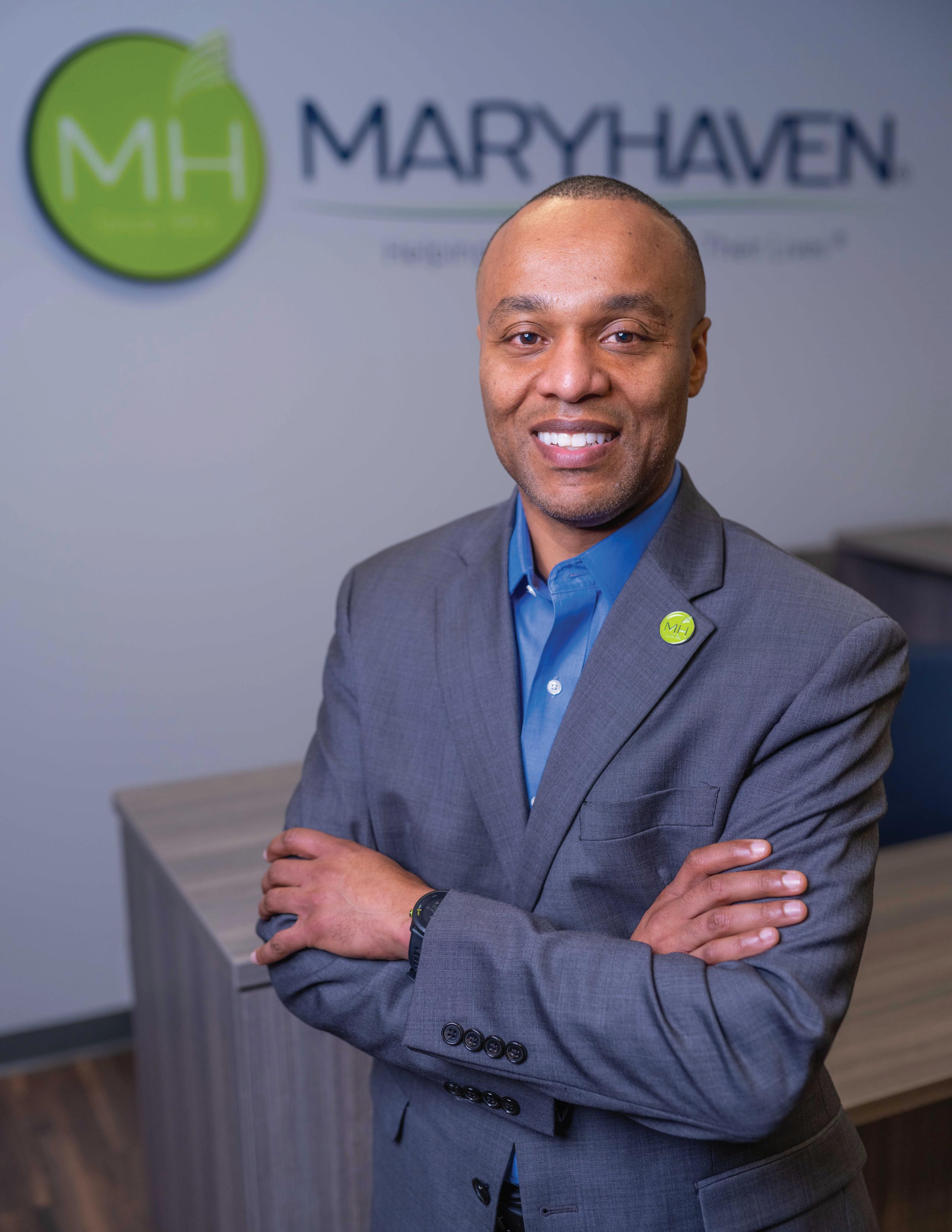 Photo by Ira Graham III
Ira Graham Photography
Oyauma Garrison President & CEO
Maryhaven
Photo by Ira Graham III
Ira Graham Photography
Oyauma Garrison President & CEO
Maryhaven
When Oyauma Garrison joined Maryhaven as their new President & CEO last summer, he came to the agency on the heels of a 44% increase in overdose rates in the African American community. Overall, the opioid crisis alone caused 80,000 overdose deaths in 2021, and fentanyl has only made things worse.
Those numbers illustrate why one of Garrison’s first and most concrete goals for Maryhaven was to make sure that its doors swung open wide for communities of color.
Drug overdoses, problem gambling and mental health issues can impact everyone regardless of socioeconomic status, race, religion, orientation, gender, nationality and/ or ethnicity. Garrison experienced this firsthand with his father, a veteran and a hero, battling heroin. He points out that more than four out of five people today know someone battling an addiction.
“Addiction tears at all fabrics of our society, affluent suburbs, inner city neighborhoods, and rural communities,” Garrison said. “It exists everywhere, no one is immune. The difference is that not everyone has the same access to treatment and resources that are critical to long-term recovery.”
“Our treatment protocols include efforts to help families heal and restore healthy, loving relationships so our clients can go on to be responsible parents, caregivers and neighbors,” he added. “This mission must include being seen as accessible by people of color. We intend to build bridges with great organizations already in the urban community, partner with other community leaders and join into an open and honest dialogue about what is truly happening in our families and neighborhoods.”
Maryhaven has served more than 300,000 men and women since opening its doors in 1953. The pandemic intensified this work tremendously. “Being on the front
lines, we know that fentanyl especially is a deadly drug,” Garrison said. “We see our work not just as treating addiction, but as saving lives.”
“Certainly, we are a social service agency but now, after 70 years, Maryhaven should also be recognized an economic backbone,” said Garrison. “In fact, we’ve generated more than a $1 billion in positive economic impact to Ohio. We stabilize lives and families, help people return and stay productive in the workforce, find housing and function as taxpayers and consumers.”
“At the same time, we are a nonprofit. It’s not just about revenues and the bottom line, we focus on people—those we serve and the staff that serve them. Our staff are compassionate, dedicated experts. They need all the resources and support we can offer as they go about the essential work of truly restoring lives.”
Notably, Maryhaven is now offering same-day walk-in appointments and added a longer-term hybrid unit, called The Residence, where people can transition after their initial recovery in late 2022. “It’s critical that we offer more
“Maryhaven has served more than 300,000 men and women since 1953.”
partial outpatient programs so people have stability in housing and treatment while they return to work or start a workforce readiness program,” Garrison explained. “We also intend to hire our former clients as employees, so they can bolster their resume and continue working for a brighter and better future.”
On any given day, Garrison said up to 145 clients will stay across all of Maryhaven’s residential and
detox units as they begin their journey back to health.
“Recovery for everyone is different and we have to offer compassion,” he said. “The only common denominators are that recovery takes time AND appropriate care.”
To do this takes support, from both the community and government, particularly through Medicaid reimbursement rates (which are the same today as they were in 2018).
“Even as personnel costs and supply costs have risen sharply, we have a ceiling limit on reimbursement that has not kept pace,” Garrison said. “We need to readjust our thinking and ensure that we’re providing the lifelines people need to get through detox and into recovery.”
To learn more about Maryhaven’s services, or how to support the organization, visit maryhaven.com.


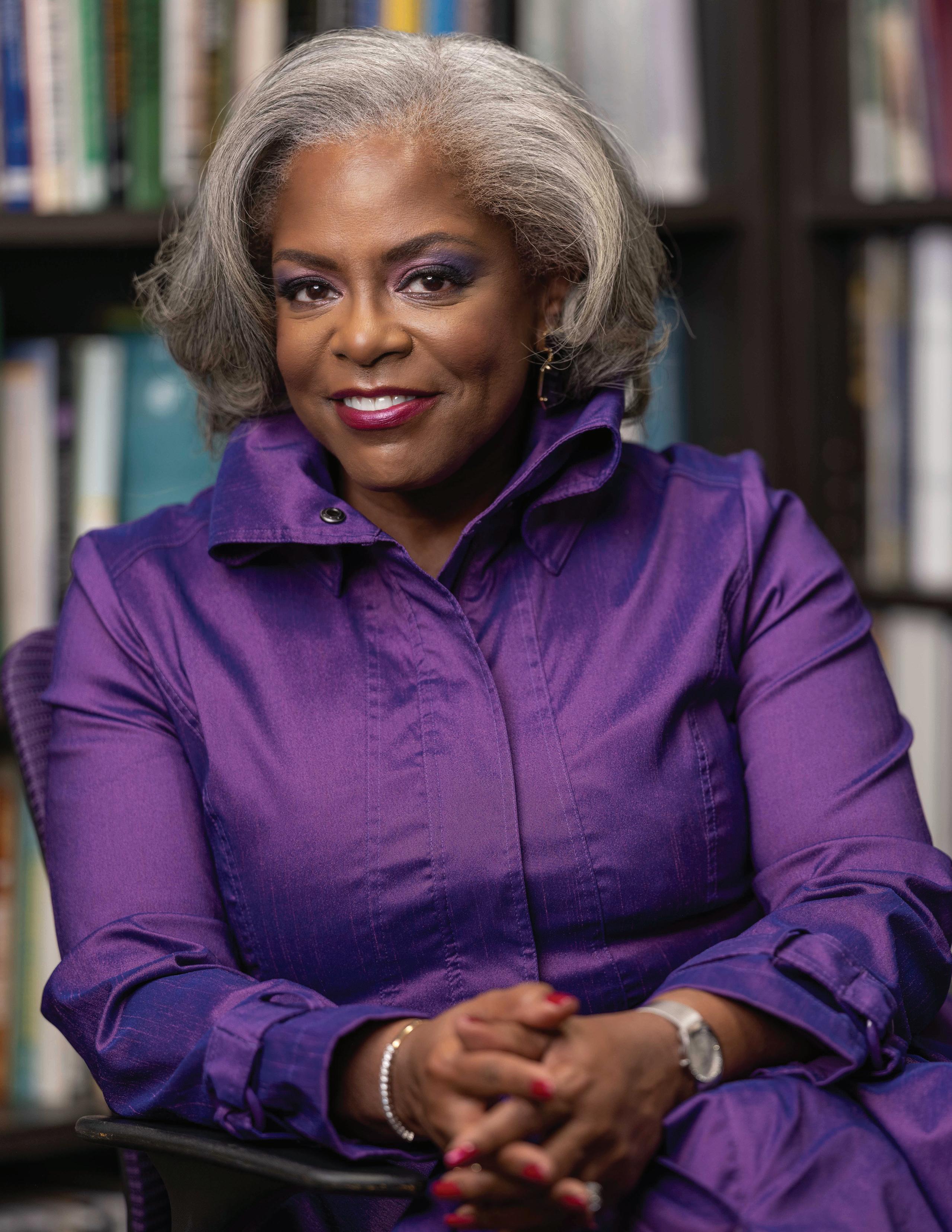
“You will never succeed in diversity, equity, and inclusion until you master cultural competence.”
Tracy Maxwell HeardPhoto by Ira Graham III Ira Graham Photography Tracy Maxwell Heard Executive Director
Anyone paying attention knows we have had an escalating mental health crisis in this country for the last few decades, and as the saying goes, when America gets a cold Black America gets the flu. According to a recent publication via Resources to Recover, an organization that links people with mental health concerns to treatment and services, “people from racial and ethnic minority groups are disproportionately affected by lack of access to quality health care, health insurance, and/ or linguistically and culturally responsive health care.” Additionally, the study reports that “more than 80% of Black Americans are very concerned about the stigma associated with mental illness, which discourages them from seeking treatment.” The publication goes on to say that “(the) lack of cultural understanding by health care providers may contribute to underdiagnosis and/or misdiagnosis of mental illness from people from racially/ethnically diverse populations.”
This is where MACC engages.
MACC is Ohio’s leading voice for cultural competence. For the past 20 years we have delivered cultural competence education and training to the behavioral health
practitioners across the state of Ohio; and that sector remains a significant part of our client base. Of course, there is systemic racism that creates inequity, disparity across professional sectors and within all of our nation’s systems – health, education, criminal justice, and business. Simply put, if these systems are engaging people, then there is inherent inequity; and MACC is poised to deliver training to behavioral health practitioners, health care providers, higher education, criminal justice sector, businesses, and nonprofits to address disparity and create greater equity.
We believe discrimination in any form harms people, communities, and the economy. MACC supports organizations in getting to win-wins gaining understanding and skills in cultural competence to increase employee engagement and satisfaction, increase equity in upward mobility, improve service delivery and outcomes, increase the bottom line, and impede attrition all while receiving a return on investment that is measurable.
But it’s not just about helping businesses and service providers find new clients and customers, it’s most important that they recognize the value of those new
demographics and understand how to approach and engage them that creates a win-win scenario.
Social determinants of health, cultural norms, religion and even geography all play a part in influencing who we are and how we perceive, understand and engage with behavioral health services. Working past stigma, shame, access, cost, available time and just prioritizing our mental health are key factors in our ability as community to seek help, get help and have equitable opportunity for recovery and survival.
We are not just making it up as we go along. All our work is evidence-based and data-driven. MACC is currently in the process of delivering on three research projects. First, we have partnered with Central State University, the Mental Health Addiction Advocacy Coalition and Ohio University on a data research project examining the inadequate state of data on the behavioral health workforce and communities of color -- identifying gaps, absences, general aggregation of lack of Ohio-specific data and how it creates data and fails to deliver equitable behavioral health services. This work is being released through a series of reports focusing on Workforce,
Treatment and Funding. The first two reports have been released and are available on MACC’s website for review (www.maccinc.net). Every report offers recommendations for solutions to the issues we identify and at the conclusion of reporting, a Task Force comprised of legislators, behavioral health practitioners, and relevant decision makers and funders will be seated to address and actualize the recommendations.
Secondly, MACC is conducting a Needs Assessment focused on behavioral health practitioners and how to best prepare and support them in providing the highest level of equitable service to all Ohioans. We know what the service population needs, we want to ensure we are empowering those professionals to meet the need. Of course, cultural competence is a big piece of that preparation.
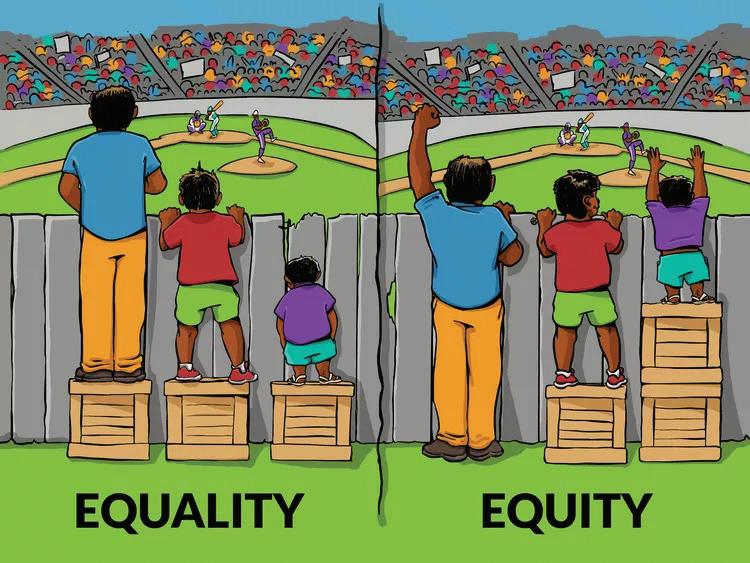
Lastly, we are working with Deloitte to deliver responses on an initiative set forth by Governor Mike DeWine – Wellness Workforce Initiative to expand Ohio’s behavioral health workforce.
MACC’s eye is on ensuring that Ohio’s Wellness Workforce is not just expanded, but reflective of the minority populations in the state.
In support of all our research initiatives, MACC will host its first in-person conference post-pandemic on Wednesday, May 24, 2023, “Advocacy to Activism”. This conference will bring together leaders and practitioners in
the behavioral health and mental health sectors to tackle critical issues facing our communities. This conference is not only about training and education, but ensuring we are also equipping attendees with the skills to actualize the knowledge they are receiving. Conference details are available on MACC’s website (www.maccinc. net) and social media channels Facebook, LinkedIn Instagram, and YouTube. This is work that matters.
I return to the loving arms of my husband of 23 years, Howard D. Heard, and enjoy the life we have been blessed to live. This work is my ministry. I haven’t felt this in-purpose or useful since my days in the legislature. This is work
matters. This is work that reaches and impacts others beyond me. I try to always be mindful of whose I am and to whom I am accountable and be as faithful to Him as he has been to me. “But seek ye first the kingdom of God and His righteousness; and all these things shall be added unto you.” Matthew 6:33 (KJV)
This is why MACC works for equity versus equality.

 Photo by Ira Graham III
Ira Graham Photography
Curtis Moody Chairman of the Board
Moody Nolan
Jonathan Moody President/CEO
Moody Nolan
Photo by Ira Graham III
Ira Graham Photography
Curtis Moody Chairman of the Board
Moody Nolan
Jonathan Moody President/CEO
Moody Nolan

Forty years ago, Curt Moody decided to start an architecture firm. Driven by a passion to break into a field with little minority representation, he took a considerable risk and opened the doors of Moody and Associates in 1982 — during a depressed economy. At the beginning, the firm was just Curt and a graduate architecture student. But by the end of the first year, the firm had grown to nine staff members. Sensing an opportunity to position the firm for growth, Curt joined forces with the engineering firm Howard E. Nolan & Associates, and Moody Nolan was born.
Since its founding, projects at Moody Nolan have steadily grown in scope and scale. From early projects such as branch libraries and religious facilities, the firm has been able to add projects with public works at universities, housing authorities, and hospitals throughout the country. Our projects may have grown. But commitment to our clients has always remained the same — ensuring a space performs, inspires, and above all, endures.
Today Moody Nolan is the LARGEST Black-Owned archi-
tecture firm in America. Our firm’s growth has been made possible by the confidence to take risks and move forward. But most of all, we’ve remained true to a basic commitment — to provide exemplary services, design signature projects, and recruit the most capable and talented design professionals. Because of this, Moody Nolan has expanded our geographic footprint beyond our Ohio roots. Today, we work coast to coast and maintain eleven regional offices.
We consider every project to be an opportunity. To rise above the norm. To move the design conversation to new places. To create spaces that are memorable not just for a moment, but forever. This vision for responsive architecture is continually recognized by our peers and clients. And it has earned us more than 340 design citations as well.
We have received more than 51 awards from the American Institute of Architects and 45 from the
National Organization of Minority Architects. While the recognition we’ve received makes us immensely proud, it never overshadows our deep commitment to meeting the unique goals of each client. Our primary focus will always be to work collaboratively with clients from initial idea through construction to ensure their vision is met. This core belief, in our mind, is what sets us apart from most award-winning design firms.
Today, Moody Nolan is led by Curtis Moody who is the Chairman of the Board of the firm, and his son Jonathan Moody serves as the President/CEO. Together they have a team with diverse talents, located strategically across the country. Standing behind our leadership, you’ll find more than 350 professionals, all dedicated to creating spaces that perform well and feel inspirational.
 Photo by Ira Graham III
Ira Graham Photography
James Howell
Photo by Ira Graham III
Ira Graham Photography
James Howell
“The Barbeque Man”
He needs no introduction because he is “Barbeque Famous” in Columbus, Ohio. Those that know, just know and tell their friends and co-workers because his barbeque is just that good. Customers come all the way from Dublin, Ohio and as far as Canal Winchester, Ohio to savor his food and especially his tasty side dishes! For over 10 plus years folks been coming in his restaurant for for his sho-nuff delicious and tasty barbeque ribs, chicken wings, brisket, sandwiches, pulled-pork sandwiches, and turkey and rib dinners.
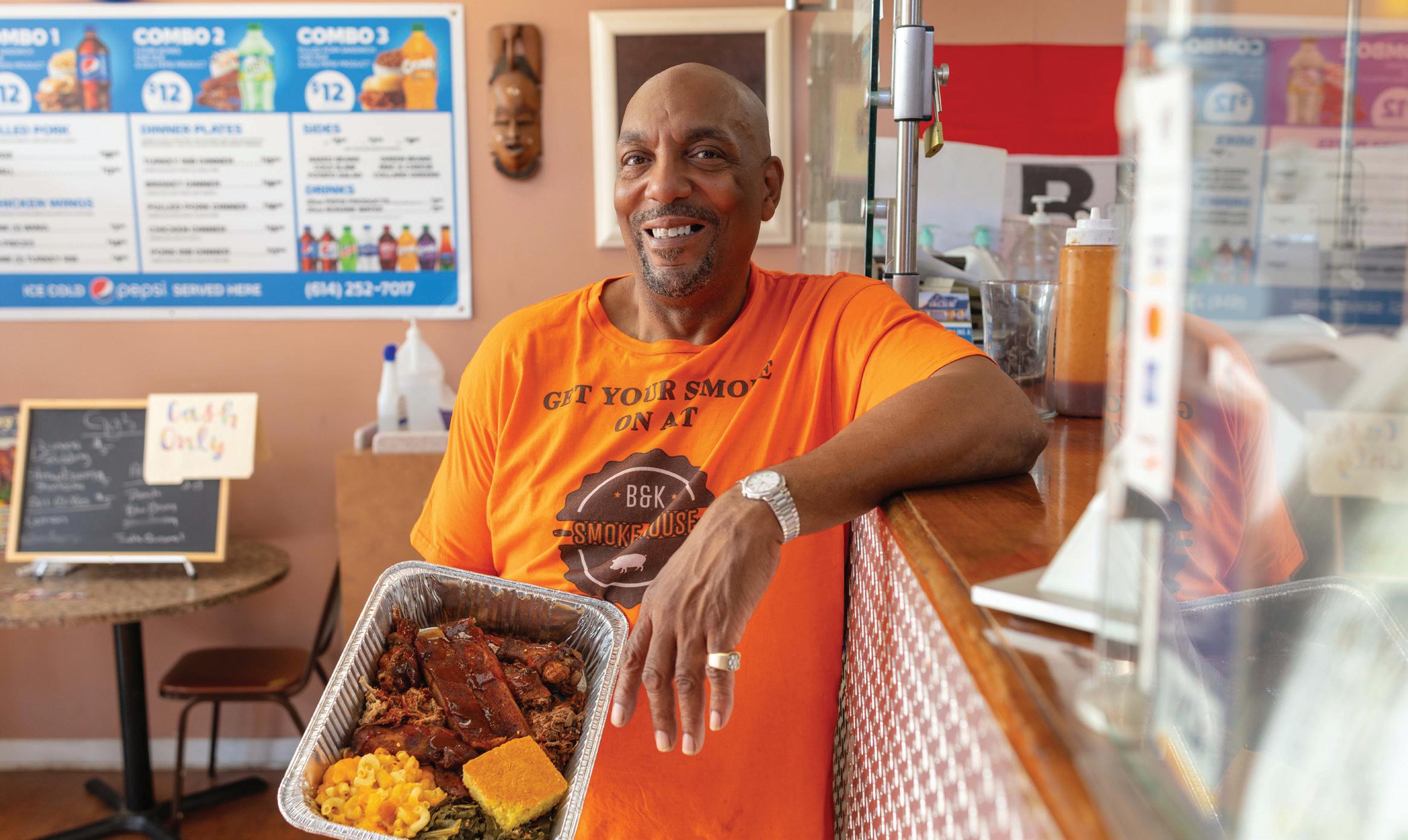
James Howell is the owner of
B&K Smokehouse located on the East Side close to downtown on E. Main Street. He’s closed Sunday through Monday, but Tuesday through Saturday you’ll run into lawyers, medical workers, bankers, construction workers, and all sorts of old friends you’ve probably not seen in a great while in line for take-out orders.
James is a military veteran having served in the U.S. Army from 1986 to 2003 as an infantry solider he frequently found himself often on the frontline of combat. James was raised in the Lincoln Park neighborhood of the South End of Columbus, Ohio and enlisted in
the Army at the age of 24 to escape the drama of the hood where drugs ran rampant. Howell rose through the ranks of the military becoming a staff sergeant before taking a medical discharge after 17 years of service.
After James military service he worked at The Ohio State University as a building maintenance supervisor. It was about 12 years ago; James left his job at OSU to open B&K Smokehouse. Plans are in the works for James to expand his restaurant to add a full-service dining room to serve more customers.
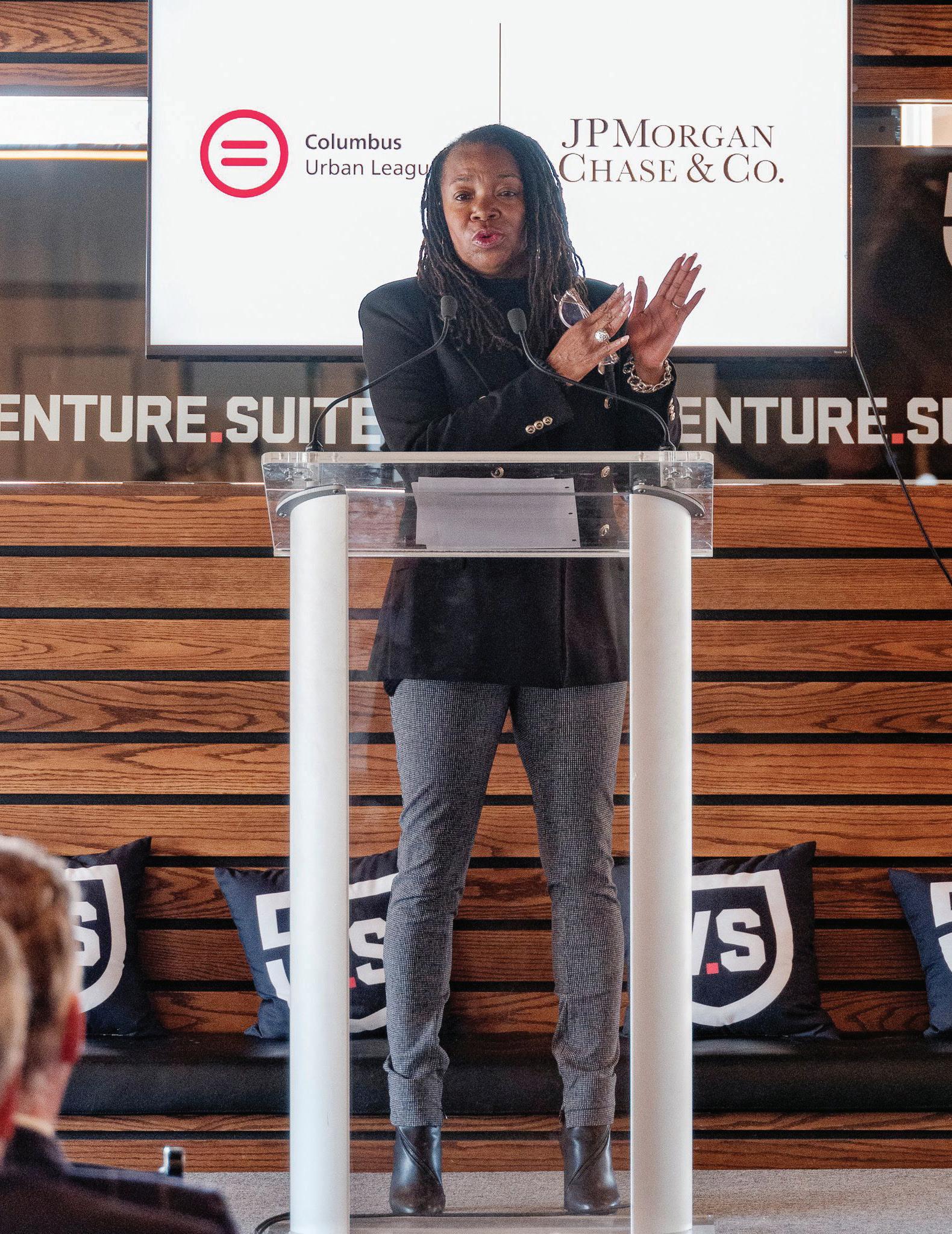
JPMorgan Chase is investing $3 million over the next three years to The Columbus Urban League (CUL), as part of an annual competition to source innovative and sustainable ideas to advance equity in the United States.
Leaders from Central Ohio joined JPMorgan Chase at CUL’s Venture Suite to announce the investment, which will, in turn, launch CUL’s new Accelerate Her initiative.
“The Accelerate Her initiative and the multi-year, multi-million-dollar investment by our partners at JPMorgan Chase will have a rippling and residual impact on the economic empowerment of Black women and a tremendous economic impact on the community as a whole,” said CUL President & CEO Stephanie Hightower.
Among other things, the Accelerate Her initiative will provide education and support, access to capital and contracting opportunities for 100 women entrepreneurs and business owners to help them scale up and grow.
“The expertise, perspectives and lived experiences of women of color uniquely position them to drive solutions that expand economic opportunity in their communities,” said Corinne Burger, Columbus location leader at JPMorgan Chase. “We at JPMorgan Chase are thrilled to partner with the Columbus Urban League in their ongoing work to lift up Black female entrepreneurs and their businesses here in Columbus.”
JPMorgan Chase began the Annual Challenge, formerly known as the Advancing Cities Challenge, in 2018, evolving the concept in 2021 in response to the disproportionate impact of COVID-19 pandemic on women of color.
“The partners involved in this work
share in the vision for achieving greater economic prosperity in our region and know we all must work to address challenges through innovative and impactful programming,” said Kenny McDonald, president & CEO of the Columbus Partnership.
About the organizations:
The 105-year-old Columbus Urban League (CUL) is an advocate and resource for Black and urban communities that is dedicated to growing wealth, education, earning power and small businesses while also supporting strong families. Driven to advance racial equity and social justice, CUL has distinguished itself as an effective organization in numerous ways, including as one of only ten organizations to be selected for funding by One Million Black Women and by earning ranking as one of the top five percent of all 93 National Urban League affiliates. For more information, visit cul.org.

JPMorgan Chase & Co. (NYSE: JPM) is a leading financial services firm based in the United States of America (“U.S.”), with operations worldwide. JPMorgan Chase had $3.7 trillion in assets and $292 billion in stockholders’ equity as of December 31, 2022. The Firm is a leader in investment banking, financial services for consumers and small businesses, commercial banking, financial transaction processing and asset management. Under the J.P. Morgan and Chase brands, the Firm serves millions of customers in the U.S., and many of
the world’s most prominent corporate, institutional and government clients globally. Information about JPMorgan Chase & Co. is available at jpmorganchase.com.

eight years ago to follow her true passion of art. Lisa has done just that, inspiring creativity, & social connectivity right here in Columbus.

Painted Pearls Paint Parties is a paint and sip studio located on the Eastside of Columbus, at 5943 E. Main Street. This is one of the only black-owned paint party studios in Central Ohio. Lisa M. Cliff is the owner of Painted Pearls Studio who is an accomplished artist, entrepreneur, and successful realtor. Lisa’s paint studio offers an evening of fun step by step art instruction in her cool and eclectic studio, that inspires creativity. Lisa launched the paint and sip studio
Lisa says, “Painted Pearls Paint Parties, represents what we do, and who we are by painting and sharing pearls of wisdom.” Pearls inspire the “I am” positive affirmations that Lisa writes and recites before every painting session. The “pearls” sets the tone for a fun, unique & uplifting painting experience. Then the creativity, laughter and the party can begin. It will be a fun & relaxing evening among friends, accompanied by the smooth tones of R&B, sprinkled with a little jazz.
Painted Pearls offers the perfect girl’s night out, date night, birthday or special occasion event. We believe that sharing a creative experience is “good for the soul”,
and a great way to reward and galvanize your friends, co-workers, or sorority friends. From Lisa’s past corporate VP experience at Glory Foods Inc., she understands the importance of building strong cohesive work teams and conducts corporate team building events often.
At Painted Pearls Fine Art Gallery, you are invited upstairs to enjoy and purchase Lisa’s collection of beautiful fine art and multimedia. This year, Lisa will launch a new “Featured Artist” series sponsoring a wonderful rotating array of local experienced and emerging fine artists. As a licensed realtor, Lisa will also conduct homeownership seminars.
You can connect with Lisa at Painted Pearls via her email paintedpearlspaintparties@gmail.com


Armana Embaie is a designer and founder of EMBUYE’ JEWELRY. She is a first generation Eritrean American. Her jewelry collection takes customers on a journey of reclaiming self. Amana strongly believes that jewelry is a physical archive of history, culture and stories untold. She says her purpose is to create with purpose. She designs jewelry that connects Africa to the Diaspora. Her goal is to design everyday accessories that attract the eye and spark conversation.

She believes it is through these moments of exchange that we bridge the gap. Her hand-crafted collection is designed to be gifted for special occasions and passed down to generations to come. Her customers have the option to even customize her jewelry distinct to their ancestors.


Her long-term goals she desires EMBUYE’ JEWELRY to be a steppingstone to starting a women’s entrepreneurship project. She envisions this foundation will work with women residing in developing countries within the continent of Africa. Her mission is to facilitate economic self-sufficiency and empower women to unapologetically take the drivers seat to their economic future. 100% of the proceeds will go towards the women’s group income. This economic outlet will provide women and their children with access to preventable health education/ prenatal care.
You can connect with EMBUYE JEWELRY on Instagram @embuyejewelry or online at embuyejewelry.com
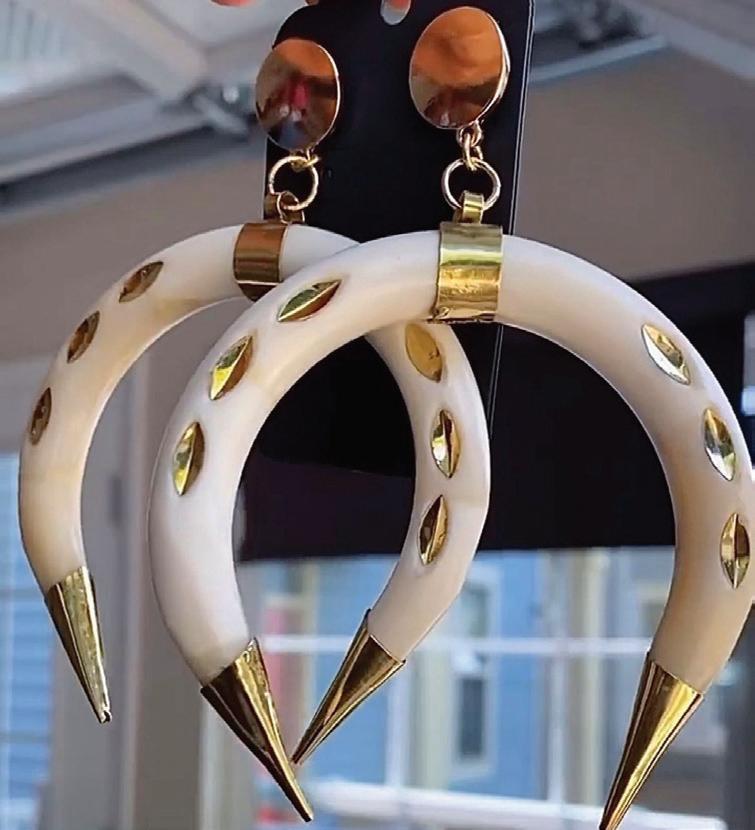

he’s learned about Columbus, Ohio is how much people really support their local teams, restaurants and local businesses. He mentioned that was one of the first things that stood out to him about the people in Central Ohio.
Lathan comes from a Blue-Collar household. His father is in the Air Force, and he’s witnessed both of his parents working multiple jobs in order to give him and his sister the best opportunities to be successful. Whether paying for his sister’s volleyball or paying for him to travel for football camps, he counts both of his parents as his two biggest hero’s that give him the motivation to push himself to higher heights.

In 2020, Lathan Ransom committed to play football for The Ohio State University as a defensive back (DB). He arrived in Columbus from his hometown of Tucson, Arizona where he was selected to play in the 2020 All American Bowl. Lathan is twenty years old and stands 6’ Ft 1 and weighs in at 205 lbs.
As a freshman at The Ohio State University Ransom played in seven games and had six tackles. As a sophomore in 2021, he played in 13 games and had 38 tackles and
one sack. In the 2022 Rose Bowl, he suffered a broken leg. Ransom returned from the injury in time for the 2022 season. He was one of 12 semi-finalists for the Jim Thorpe Award.
Today, Latham is a junior studying communication at The Ohio State University. He hopes to one day become a sports analyst for a major sports network. On most nights Lathan prefers staying home and watching movies and various TV shows.
Lathan says that the coolest thing
Lathan explains that his best memory thus far playing for The Ohio State Buckeyes would have been the first game last year playing against Notre Dame. He had broken his leg the year before on the last game of the season and it was tough on him mentally and physically. Just realizing all the work, he had to put in to get ready to play in that game and finally go out there was very emotional to him. So that “BIG WIN” in a big matchup meant the world to him!
Meet This Month’s
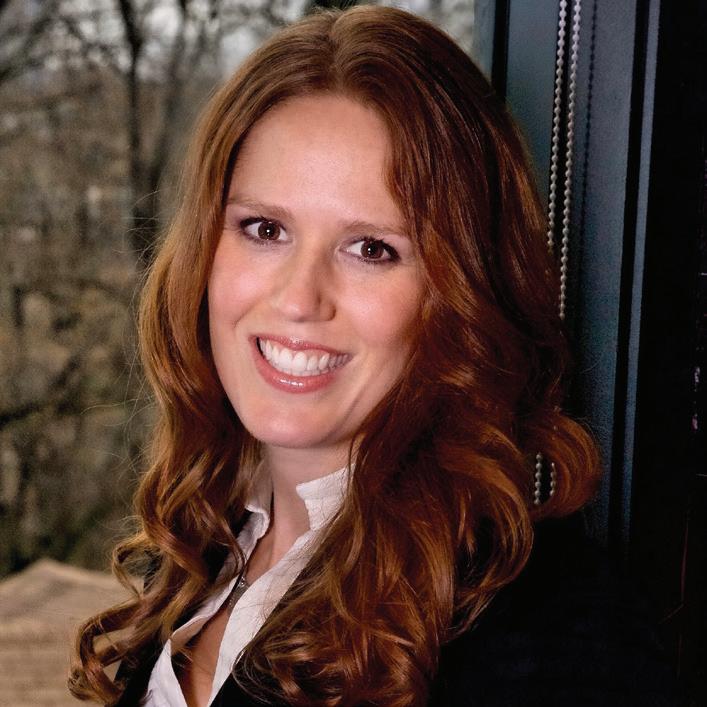
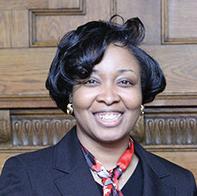


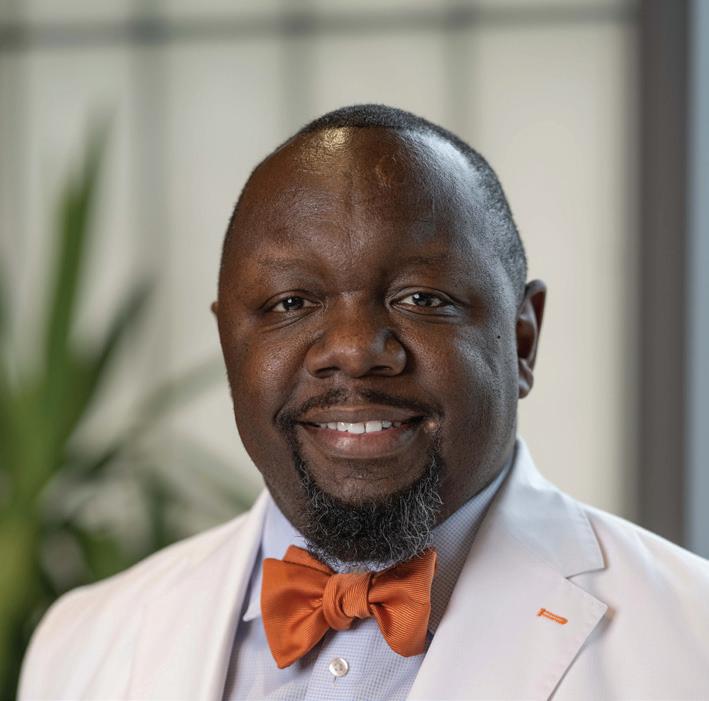
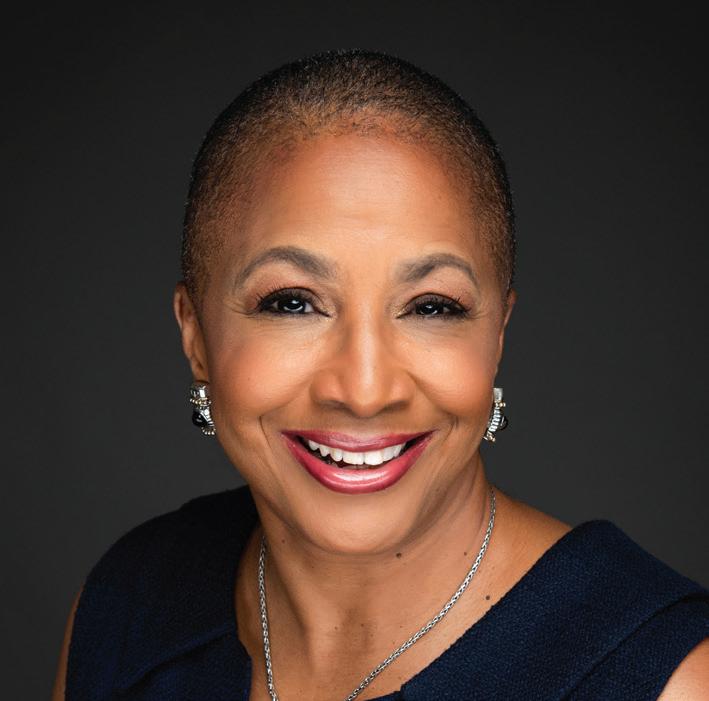
how the story of the Little Rock Nine has been given scant space in American history textbooks, “usually one page,” and that students could learn about “courts, non-violence, [the] persistence of the human spirit, [and] journalism.” To me, her most insightful statement was when she mentioned: “We deny our children truth. And they love truth. They desire truth. So, we have an obligation to give them truth and give them complexity.”
MSNBC’s National Day of Racial Healing
town hall, which was sponsored in January by the W.K. Kellogg Foundation, examined the ongoing danger that White supremacist ideology poses to our nation, as well as the challenges many schools have in teaching about our country’s oppressive history against racial and ethnic groups. One of the most emotional and inspiring moments of the town hall was when Minnijean Brown-Trickey, a member of the Little Rock Nine, was brought to the stage alongside Pulitzer Prize-winning reporter and 1619 Project creator Nikole Hannah-Jones. At 81, Miss Minnijean, as Hannah-Jones referred to her, is vibrant and sharp with profound words of wisdom to share about her lifelong activism. Miss Minnijean explained to the audience
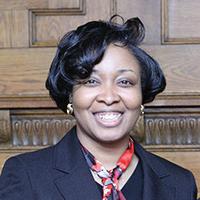
In thinking about truth when it comes to studying American history, I often reflect on a scripture I’ve carried throughout my life, John 8:32, where Jesus said, “And ye shall know the truth, and the truth shall make you free.” While Jesus was specifically referring to the liberty that comes with knowing God, this basic spiritual principle of knowing truth is fundamentally applicable when teaching history, especially the harsh realities of America’s past. From my own experience in teaching about U.S. racism and segregation in my African American sports history and TV diversity courses at Ohio State University’s Lima campus, I have found that my students, the majority of whom are White, appreciate learning about events and people that were not featured in their high school curriculums. In my African American sports
history class, we began our first segment on Jack Johnson, America’s first Black heavyweight champion during the Jim Crow era. There is not a more complex and controversial sports figure than Johnson, who in 1910 defended his title in the U.S. by defeating Jim Jeffries, the former champion who was pushed out of retirement and deemed the “Great White Hope.” To provide my students with a better understanding of the racial mores during the early Jim Crow period in which Johnson lived, I discussed the end of Reconstruction, which occurred the year before he was born, and the threat of lynching’s that haunted Black men living in the South. When I read the discussion board responses on Johnson from my students, they thought the racism of this era was literally “insane.” Truth telling in education is especially vital today for our young people. For the college students that I am blessed to work with, I am encouraged to see them learn about the past in an environment that does not make them feel intimidated or offended. Simply telling the truth is a powerful weapon against racism.
From food pantries to social justice initiatives, nonprofits of all sizes play a critical role in impacting the lives and stability of Americans. With more than 1.5 million nonprofit organizations nationally and north of 40,000 in Ohio, the services and programming provided are unique and special to the communities they serve. This variety and range of challenges nonprofits seek to alleviate, also creates exposure to a broad range of risks that continue to grow with each new level of funding.
Nonprofits face several specific risks that are often different than many traditional small businesses. These can include specialty coverages like sexual abuse and molestation and accident medical insurance. For organizations that serve youth or vulnerable adults, this coverage provides defense and damages protection for actual, threatened, or alleged acts of physical, sexual, or mental abuse. Accident medical policies helps to compensate participants and volunteers who are injured while participating or serving during an organization’s event.
Directors & Officers Liability protects board members, executives, and officers personally sued when managing the operations of the nonprofit. These lawsuits could include misallocation of funds, wrongful action allegations, or harassment. Even if profes-
sionals are no longer a part of the executive team, they could be drawn into a lawsuit. Employee Practice Liability insurance helps safeguard an organization from employment related lawsuits from employees or volunteers alleging discrimination, retaliation, sexual harassment, emotional distress, etc. With most nonprofits having an online presence, the processing of online donations, e-commerce and event registrations, the potential for cyber-attacks increases drastically. Cyber liability insurance can assist to protect the donors and the organization from the costs of cybercrimes.
Many think that risk management simply means buying insurance. The goal of risk management is to review susceptibility to unexpected losses and develop strategies to mitigate or prevent from occurring. Insurance is one aspect of risk management and may pay for the out-of-pocket costs if your organization is sued or incurs a loss, however, it does not pay for employee time, nor the potential impact to program efficacy, momentum, and the organization’s reputation if there is an incident. Bad things do happen to good nonprofits every day and no nonprofit is immune.
Consider the below strategies: Conduct organizational assessments to identify potential risks, their possible impact and create solutions to mitigate. Establish policies and procedures to guide employees and volunteers on strategies to mitigate risk. Regularly schedule training of employees and volunteers on risk management protocols and standard operational procedures. Transfer the risk. When hiring a vendor or independent contractor, require written agreements and evidence of insurance. Volunteers and participants should always sign releases of liability and waivers to absolve the organization. Establish Incident and Emergency Response Plans and document all incidences.
Sandra Moody Gresham is Principal of Dehan Enterprises Insurance & Financial Services LLC and can be reached at www. dehaninsurance.com or smoody@ dehaninsurance.com.
to support patients in achieving personal medical decisions using food as a component of the patient’s health plan.
patients. When combined with a consideration of social determinants of health can hopefully offer more avenues of care.
What if you went to your doctor’s office for a visit for a cold and after your evaluation were prescribed cough syrup and given a recipe for chicken soup. This is the concept behind the increasingly popular field of culinary medicine.
While the concept of food as medicine is not new it has not been a formal part of modern medicine education and training. Culinary medicine is a new field of medicine that recognizes the role food plays in our health and uses evidence to support the use of certain foods to prevent or address various ailments.
Culinary medicine is not a well-defined discipline in the traditional sense. It is not focused on a particular organ like nephrology or cardiology, nor is it restricted to a certain discipline such as dietician. Culinary medicine seeks
This new approach does not replace traditional western medicine to treat disease. If the patient has diabetes, or hypertension and requires medication those medications would be used as the clinical deems medically necessary. However, the culinary medicine professional would help the patient develop goals and include food selection and preparation as a part of achieving those goals.
The objective of the culinary medicine professional would be to empower the patient to make food and drink choices to achieve a stated goal. As an example, if a patient was at risk of high blood pressure with a strong family history and had a goal of avoiding blood pressure medications. The culinary professional would conduct an interview with a focus on food choices and assist the patient in making changes to the diet through food choices and preparation that would help to achieve that goal while making sure that the diet is palatable and as much as possible is compatible with socio-cultural norms.
This new approach to medicine will hopefully continue to expand and become more accessible to
The information, contained in this article is for informational purposes only. The purpose of this article is to promote a broad understanding and knowledge of of health topics for individuals and groups. It is not intended to be nor is it a substitute for professional medical advice, diagnosis or treatment. Always seek the advice of your physician or other qualified health care provider with any questions or concerns you may or do have regarding a medical condition/concern or treatment and before undertaking a new health care regimen or changing an existing health care regimen, and never disregard professional medical advice/treatment or delay in seeking medical advice/treatment because of something you have read in this article.
Christopher Brown, MD, MPH, FACP, FNKF CEO/founder TheDocBrown
www.thedocbrown.com
Twitter @ChrisBrownMDMPH IG @thedocbrown1
FB Christopher Brown MD, LLC
(https://www.facebook.com/profile.php?id=100083005801112&-
mibextid=LQQJ4d)
In honor of Women’s History Month, my goal was to highlight famous Columbus, Ohio women. A quick Google search revealed only a handful, so I broadened the search to include the entire state. Though the list increased, admittedly, my initial reaction was a mixture of sadness and frustration to see the majority of women ‘famous’ due to their entertainment status.
Now, don’t get me wrong; there were some great feats mentioned by women, and I do also applaud women on the stage and in the sporting arena. So, what was my issue?
A deep soul-search revealed that my frustration came from knowing how many women are out there making an impact right here in Columbus, Ohio using their God-given gifts and skills each and every day, and yet, they may never be handed a trophy, make the news, or be on an internet search list for famous historical women.
They may never even receive a simple ‘thank you.’
These include amazing Columbus women like my friend Noni Banks, Founder of the business development and coaching company The Diva Movement, who helps women entrepreneurs’ market and grow their business with confidence. Talk about making
a difference that will impact history!
And then there’s Les Carter, whose story I highlight in my book Measuring Up: How to WIN in a World of Comparison. As a single mom facing bankruptcy, she refused to take the easy option and worked harder and smarter, paying off over $35k in debt with her single income of under $50k. She then went on to educate other women with what she learned. Her financial literacy advocacy helps to give women choices, keeps children fed, and even strengthens our city’s budget. Yet, you may never find Les in a ‘historical women’ search.
And, oh, I can’t miss the opportunity to highlight Columbus children’s author, Carla Dewayne Jones. This woman is a ball of energy and charisma. Her presence alone brightens anyone’s day! Her books, including This is What Can Happen When We All Come Together, are geared toward making a difference in the lives of children, their parents, and the community. In addition to writing, she substitutes teachers and volunteers with children’s organizations. She’s impacting Columbus, one reader at a time.
These are just three of the hundreds of local women who inspire me and on whom I’d like to shine the spotlight. Their impact, just
like yours, cannot be measured by how society remembers them (or fails to).
It’s easy to get caught up in the popular notion that fame, followers, and even friendly acknowledgments are the appropriate measurement of the impact we are making in this world. It’s time to disown that broken belief.
Your success doesn’t happen when you see your name in lights — it’s happening each day you live with purpose, emitting the light you were given to shine.
What can you do this month to help another local woman shine brighter?
Renee Vidor, Coach, Speaker, Author, and Founder of ‘The Winner’s Circle Community.’ Connect with Renee on Linkedin, FB, IG, TikTok, (@ReneeVidor) www. ReneeVidor.com.

year, it may be time to pray, plan and pursue.
Pray and talk with God about your goals and the master plan that He has for your life. He knows the plans that He has for you. They are plans to prosper you, to give you a future and a hope. Spend some alone time with God in prayer to build yourself up in your faith.
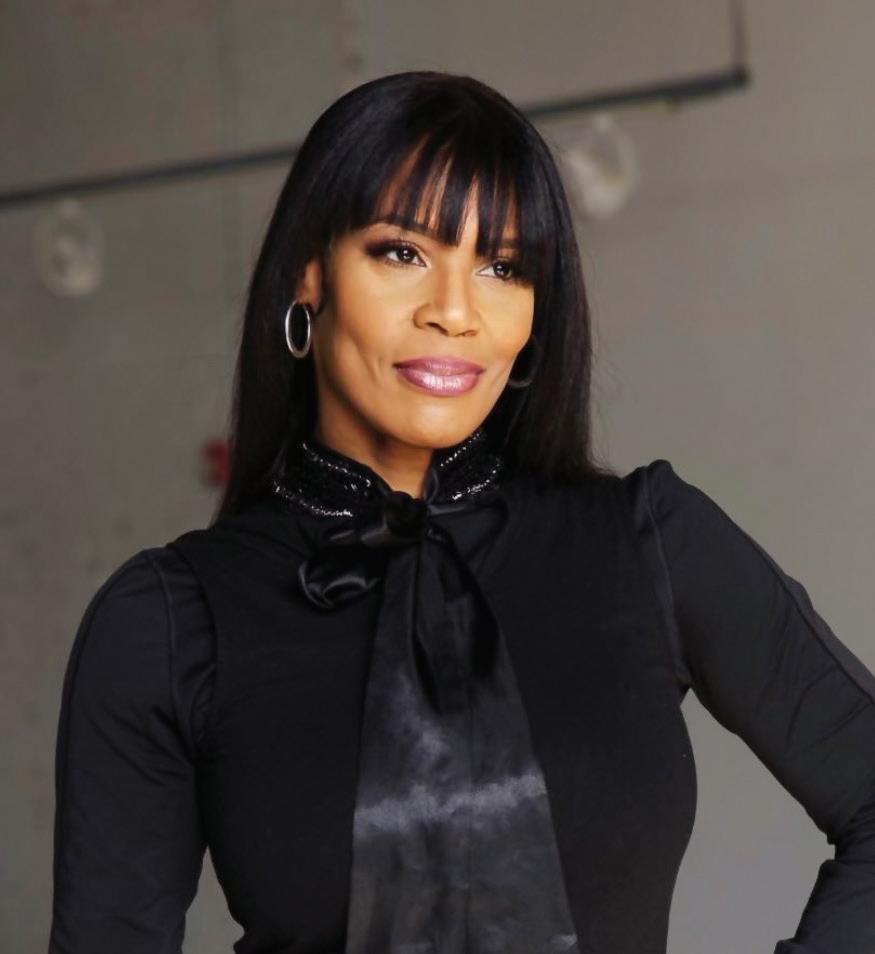
tent with your times of reflection. Thank God for your small wins and work through the process of development. We all go through progress and the journey on the way to your goals will help you appreciate your hard work and accomplishments.
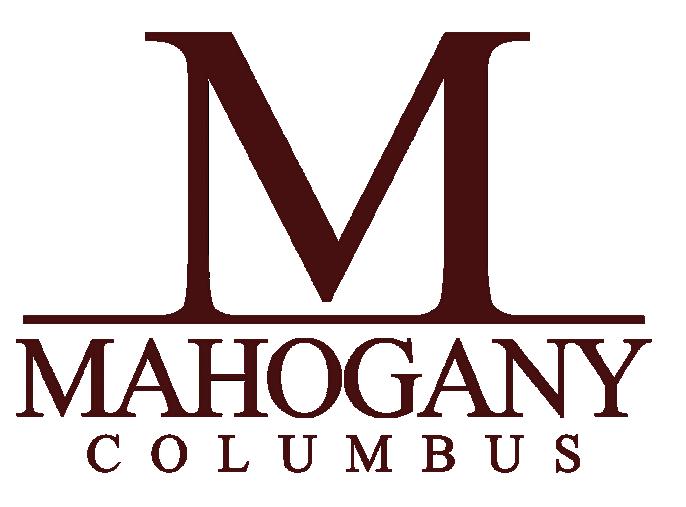

“If you don’t identify where you are, you can’t track your progress”
As the clock strikes twelve and a new year begins, many people are super excited about the opportunity to have a fresh new start. Some make “New Year’s Resolutions”, set new goals or passionately announce promises of what they plan to do over the next twelve months. While it is great to set new goals and consider needed lifestyle changes, there are other things that must happen in order to achieve any desired goal. We are now close to finishing up the first quarter of the year and time to check our progress. If we don’t identify where we are, we can’t track our progress. This requires a time of reflection. What does that look like? After reviewing the goals set at the beginning of the
Plan your goals. Write them down and then note steps to help you reach where you are headed. Read and research information that can assist you along the way. But first, evaluate and determine where you are and then you will know how to proceed forward. Examine your motives for what you are trying to do. What is it that you are hoping to accomplish? When we commit our work to the Lord, He promises to establish our plans.
Pursue your goals. This is where reflection is critical. Before executing your plans, be honest about where you are on your journey. Give yourself grace, but measure your progress from the beginning, adjust as necessary and then move forward. You got this! You can do all things through the power of God and giftings that He has placed inside of you. As you see progress, remember to be consis-
In the last edition I relayed that a recent study confirmed what we all see: rental housing is becoming ridiculously unaffordable, and our community is being priced out of Columbus. Specifically, the percentage of Black renters forced to pay unaffordable rents rose from 42% to 51% between the years 2000 and 2019. Most Black renters lived in unaffordable housing in 2019 – a number the report said was surely higher now due to COVID-fueled price increases since 2020.
Fortunately, citizens of Columbus have a right to enact our own laws – to bypass the city council by going straight to the ballot, and a group of citizens started that process by filing a proposed rent stabilization law with the City Clerk in April. However, within six weeks of that filing the rightwing, authoritarian state legislature -- with the encouragement and support of entities including the Ohio Real Estate Investors’ Association, Ohio Mortgage Bankers’ Association, Columbus Partnership, Columbus Apartment Association and the former Executive Director of the Columbus/Franklin County Affordable Housing Trust Fund -- passed a law prohibiting rent control in Ohio.
But citizens were undeterred – the state can’t prohibit everything
and can’t stop citizens from filing lawsuits – so we wrote a new law based on what we are still able to do and created a system of incentives and disincentives that seek to reward good landlord behaviors and punish bad ones.
In short, the ballot initiative creates a Department of Fair Housing, which operates under “the Columbus Compact”—a principle that means “power to the people” – and that works alongside a Fair Housing Commission of community advocates that must approve proposed Department policies. The Department registers residential rental property at the natural name of owners – so we know the real people who own it and not just the name of the LLCs -- and then licenses units for lease on the open market. Further, the Department supports the development and operation of property-based tenant unions and neighborhood-based tenant associations which can work to slow gentrification and displacement.
For each licensed unit, the Department calculates a “Fair Rent,” which is based on the rent charged on January 1, 2020, and then escalated forward to the year 2025 when the law takes full effect, using the annual percentage change in wages in Franklin County. And since we know that new
housing coming on-line at any price is good for market pricing, the Fair Rent for any new unit is whatever the owner initially sets, then escalated annually at CPI + 2 percent. Government can’t set a rent cap – which would be rent control, but once we establish the Fair Rent calculation we use it as a “safe harbor” for landlords and a reference point for their business decisions.
From there, the proposal taxes away excess revenues above Fair Rents, exposes landlords with rents well above Fair Rents to potential price gouging lawsuits, restricts such predatory landlords from accessing public support and makes predatory landlords’ pariahs in the real estate development community.

My career with City Year started with a red jacket.
It was late summer 1995 when his father, Bruce Robinson, saw a group of young people all wearing the same red jacket entering a building in downtown Columbus, as he was leaving work. Curious, he asked the group who they were and what they were doing. They handed him a brochure about City Year Columbus.
“When my dad got home, he handed me the brochure and ‘suggested’ I learn more about the organization,” Robinson said with a laugh. “I’d recently graduated with a Bachelor of Arts degree from Denison University in Granville, Ohio and was back living at home unsure of my next move.
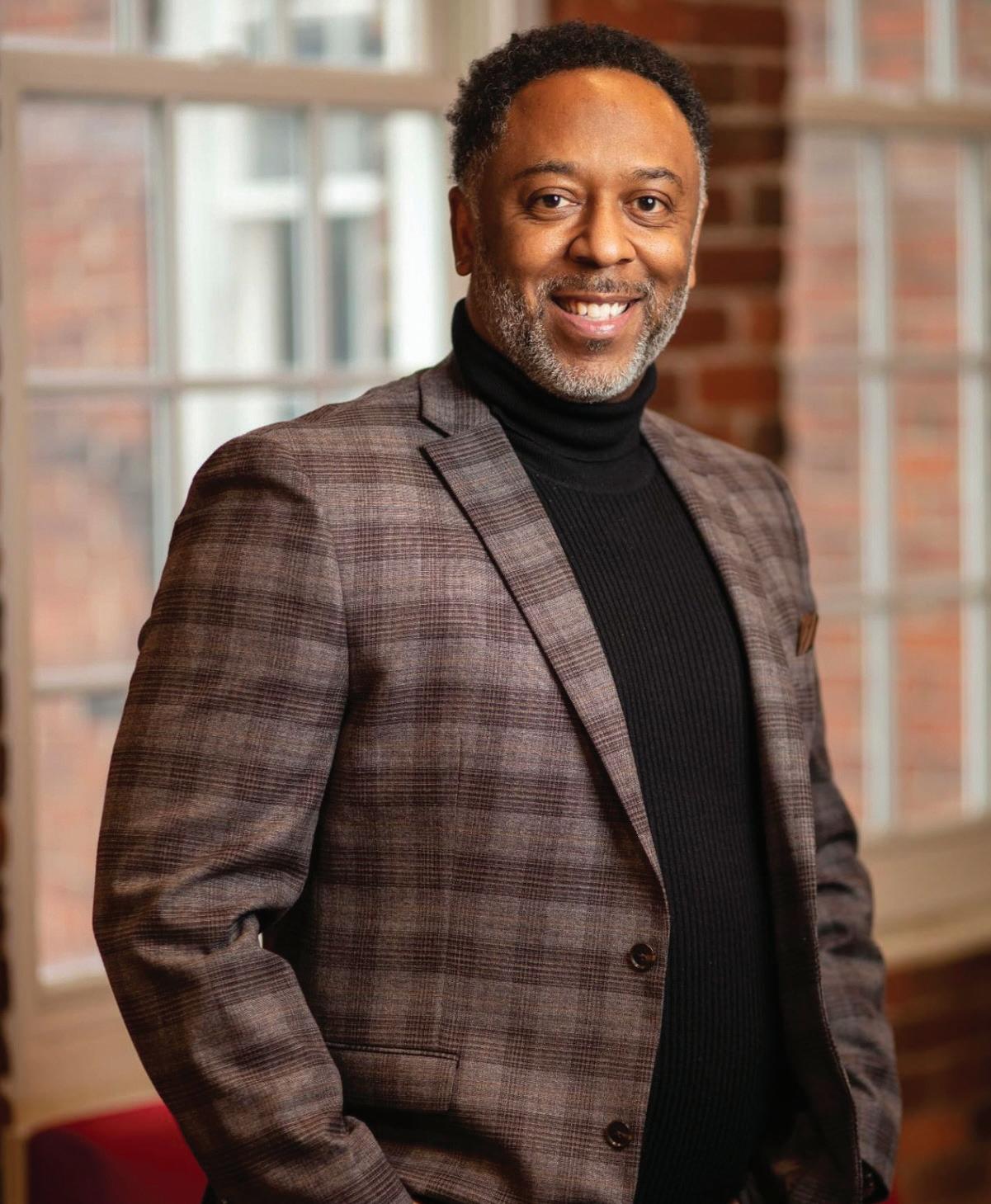
“I hadn’t considered working for a non-profit and I never thought it would become a career. But with a nudge from my parents, I gave City Year a call.”
Robinson was hired as an AmeriCorps member for City Year and committed to a year of community service. City Year has partnered with Columbus City Schools since 1994 to keep students in school and on track to graduate ready
for college and career success. AmeriCorps members—ages 17-25—work to support teachers, working with students in classrooms offering academic, social/ emotional support, tutoring and mentoring. After a successful service year, Robinson was promoted to a manager, leading a new crop
of AmeriCorps members.
“Looking back, my first year as a leader was somewhat a mess,” he said with a laugh. “At 23-yearsold, I had no clue what I was doing. However, that experience provided valuable leadership insight that I carry to this day.”
Building on his City Year experience, Robinson went on to work in leadership positions for several non-profit organizations in Columbus, including Columbus Compact Corporation, United Way of Central Ohio, Columbus Urban League, and Battelle for Kids. In 2014, Robinson was hired back at City Year as Chief of Staff. In 2021 he was promoted to Vice President, Executive Director. In his new role, Robinson took over the organization as schools nationwide continued to work through the challenges brought on by the COVID-19 pandemic and subsequent school closures in March 2020. City Year—in partnership with Columbus City Schools—pivoted its programming to virtually support students through the end of the school year.
“COVID-19 triggered a significant interruption in instruction and learning for schools including a number of students who were already experiencing academic challenges prior to the pandemic,” he said. “City Year AmeriCorps members were and continue to be uniquely equipped to support
teachers and connect with students to help mitigate learning loss.”
Those efforts continued during much of the 2021-22 school year.
City Year mobilized a “hybrid” plan including Homework Help, Classroom Support; Academic Interventions in English language arts and math; Social-Emotional Skill Development; and Student Virtual Engagement.


City Year’s support remains vital to assisting students as many may need recovery because of the loss of learning due to the pandemic school closures. The Northwest Evaluation Association projects a staggering “COVID slide,” where students will lose some 30% of their annual reading gains compared to a normal year and could lose 50% to 100% of their achievement growth in math.
Experts agree that the most systemically underserved students— Black and brown students, students from low-income families, English as a 2nd language, and students with disabilities—will
suffer the most due to school closures.
That’s why City Years’ laser-like focus on students who need extra support, is so important, Robinson said.
“Studies have shown that students who are on track by 10th grade are three times more likely to graduate,” he said. “We’re serving to help students get back on track, prevent from sliding off track and keep them on track.”
Last school year, City Year’ academic and social emotional learning activities included over 5,000 small group sessions, 1,654 hours of English Language Arts and 2,129 hours of Math interventions, plus 787 hours of social-emotional skill building sessions.
“It’s been 28 years since my Dad brought that brochure home,” Robinson said. “My City Year experience transformed into an amazing non-profit career. I’m proud to work with great partners, board members, staff, AmeriCorps members, and supporters of our organization.”
The Kipp Columbus Jaguettes High School Dance team was founded by Alisha Martin in 2019. Coach Martin had previous success leading a middle school step team and as the girls grew older, they advocated to participate in a style of dance more suited for their high school experience. One student, Te’Ajyah Clark, played a vital role in building the foundation of this team with her previous majorette dance background. They also were given an asset in Coach Ciara Williams, who had previously coached this style of dance as well. With their expertise, the Jaguettes were ready to take off! The majorette dance style is becoming more and more popular for young black students across

the nation. This dance style is extremely athletic, precise, intense and high energy.
The Jaguettes dance to band music during timeouts and half time at their high school footballs games. In addition to the varsity cheerleaders, they bring a sense of energy and culture to their Kipp Columbus high school fan base. That energy can be most compared to an HBCU dance line. The girls are heavily influenced by the Alabama State University Stingettes. Many of the girls have expressed their interest in dancing at the college level for various HBCU’s. This team has many purposes within their school community. The Jaguettes serve as a creative outlet for their dancers. They bring a sense of culture and pride to their school community that enhances our girl’s college aspirations. The Jaguettes have had the opportunity to travel and compete at various community events throughout the city.

The dance team has performed at The Ohio State University and has competed in many citywide talent contests. They have brought back some hardware even as far away as Chicago. The Jaguettes have also developed a significant spike in their Instagram social media page following. These leading ladies hope to continue finding more opportunities to show their talents and soar to higher heights.







